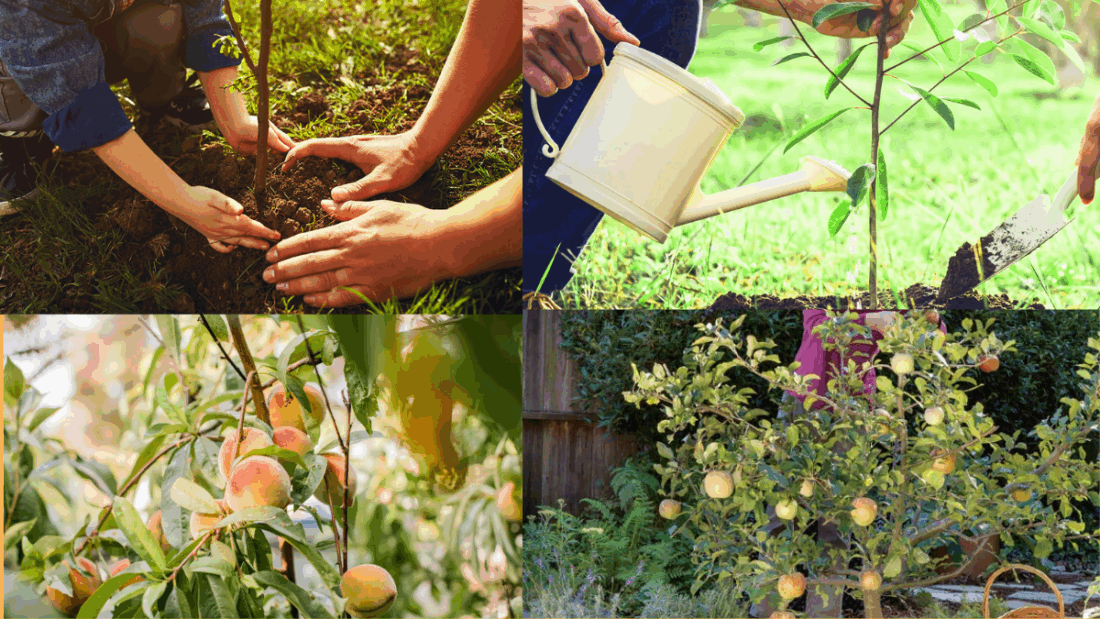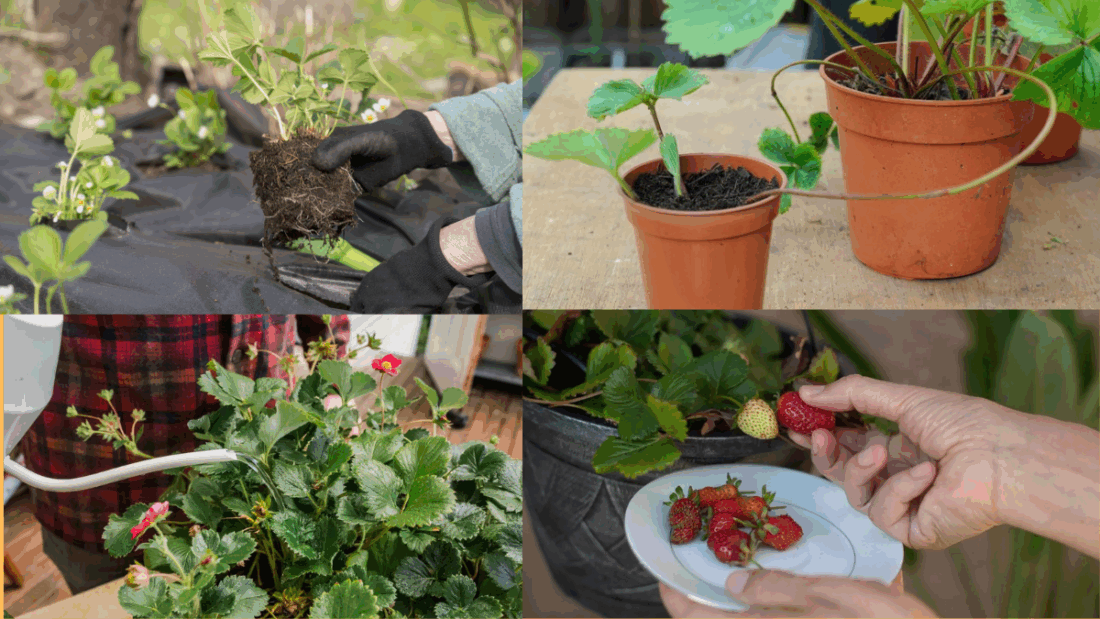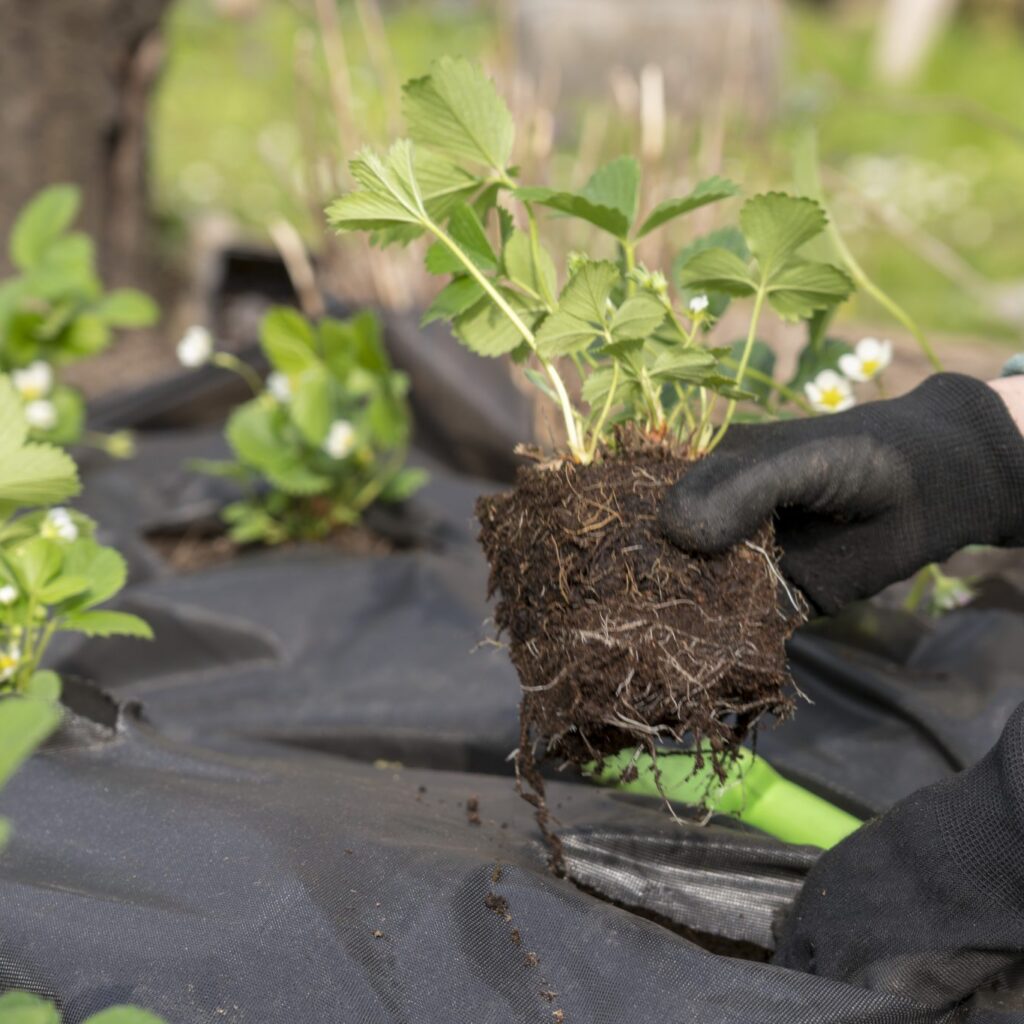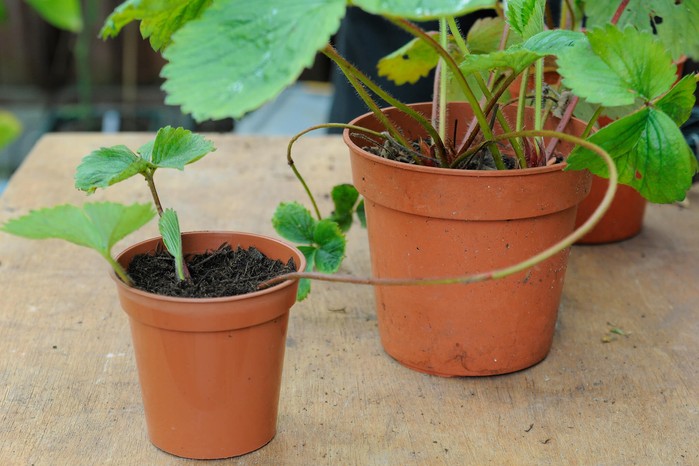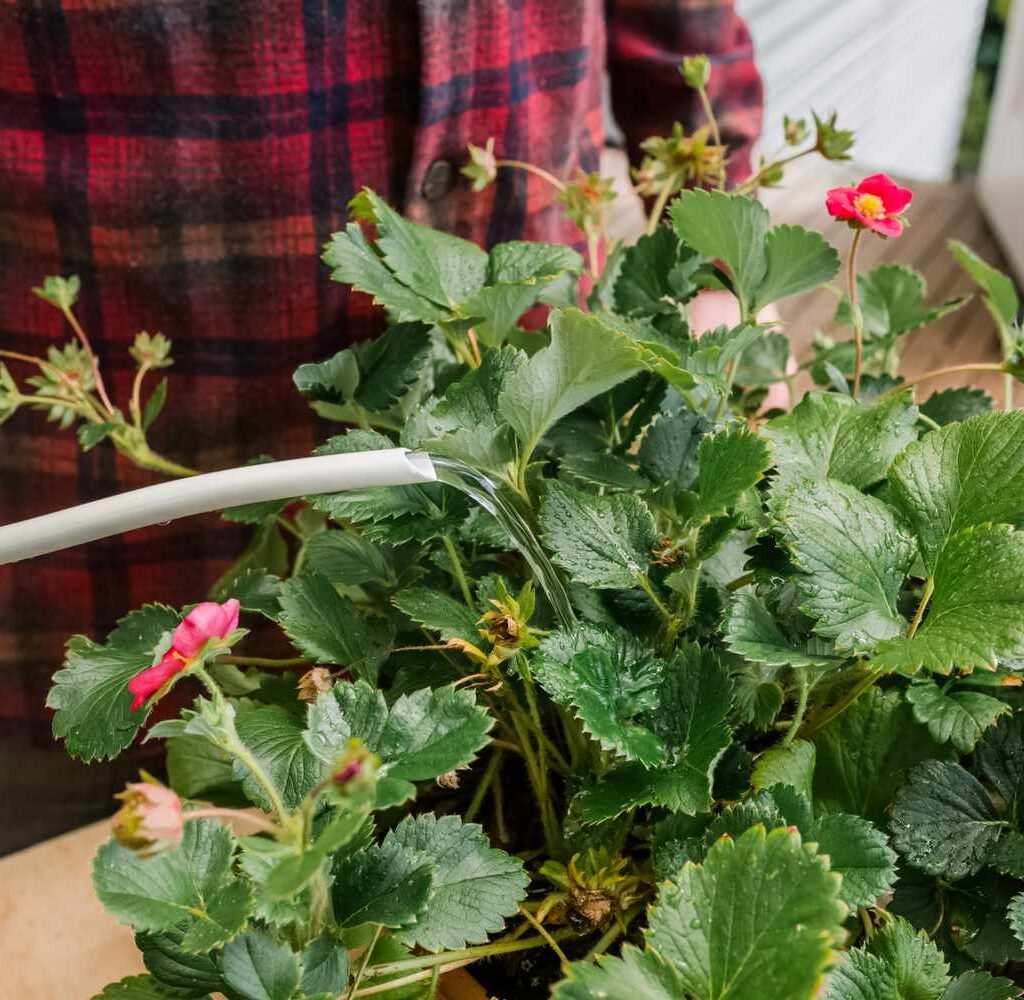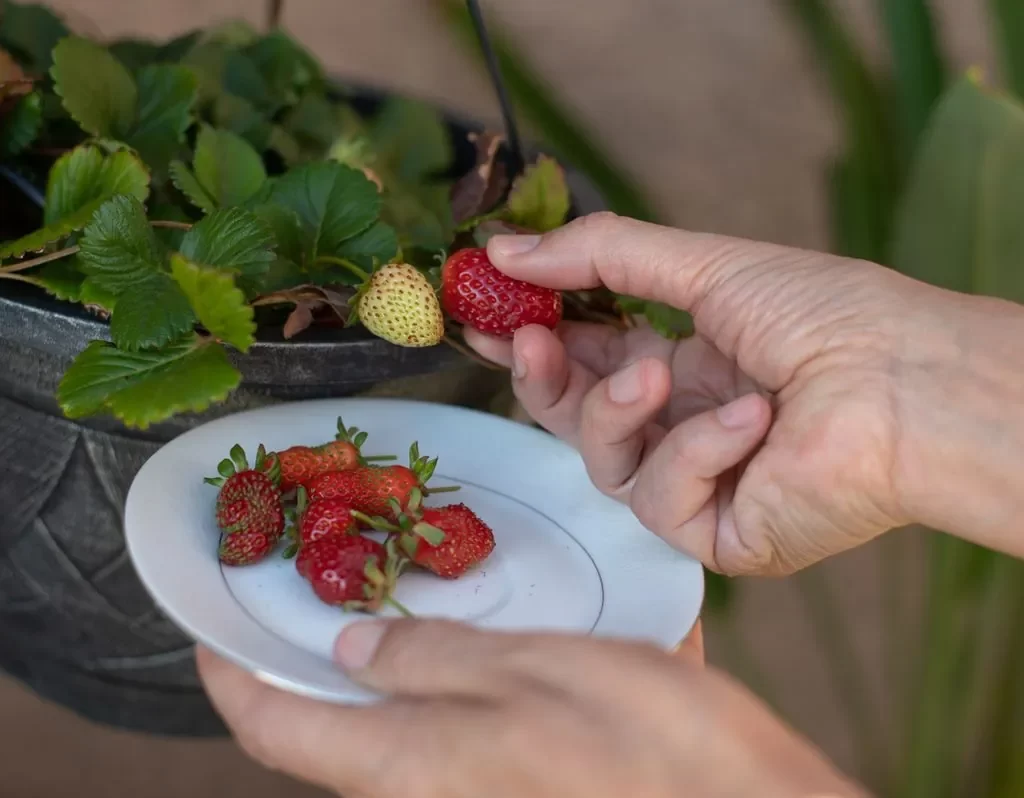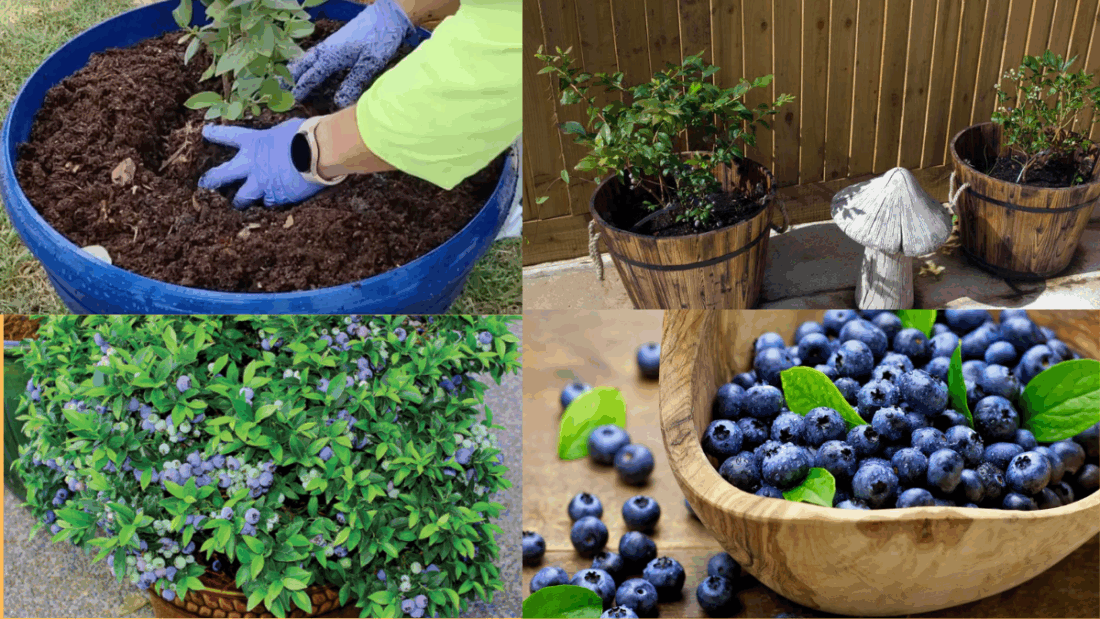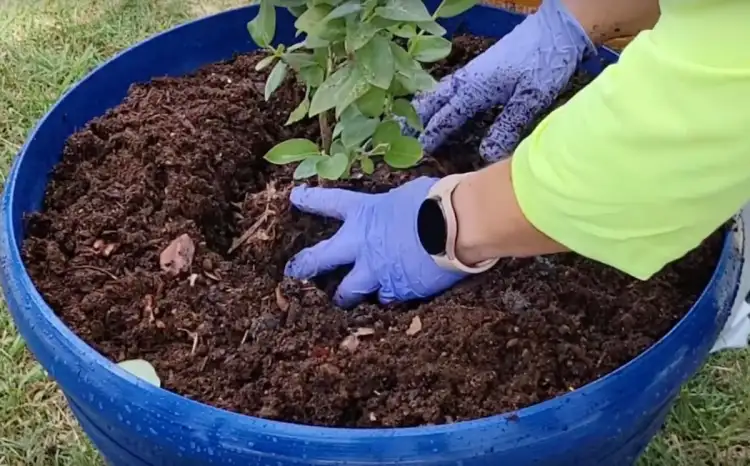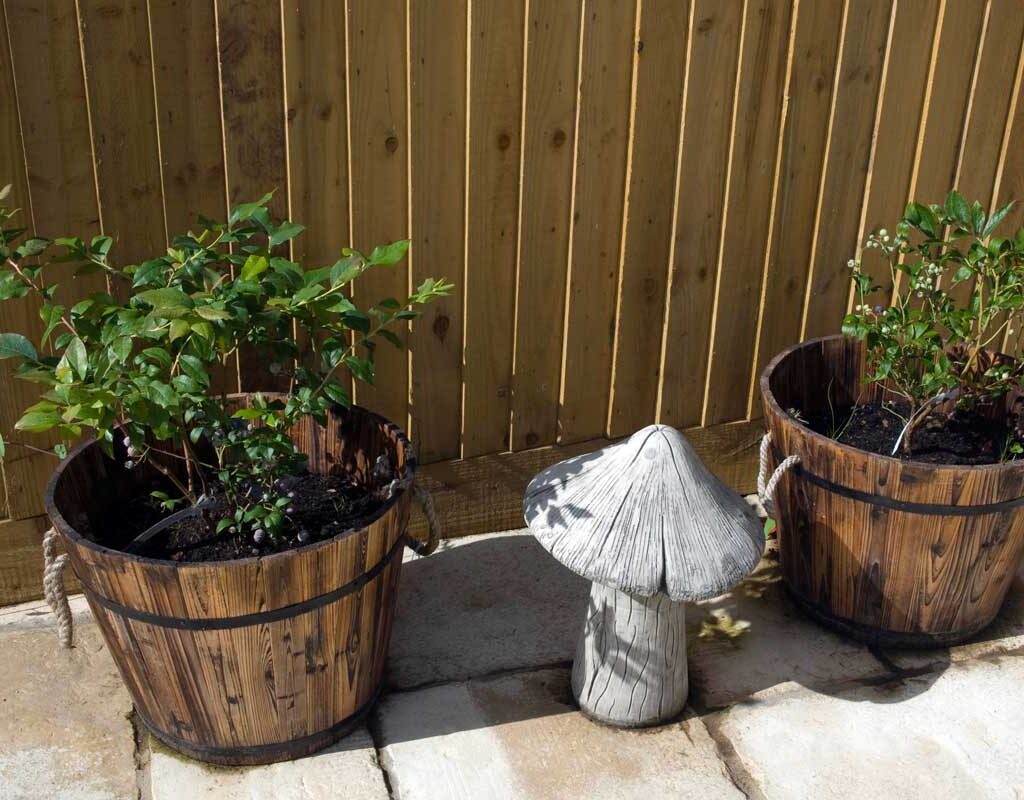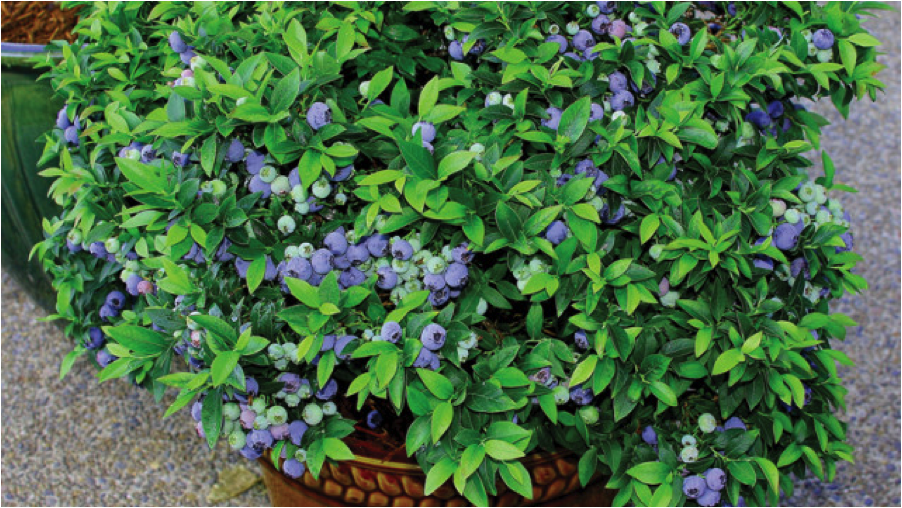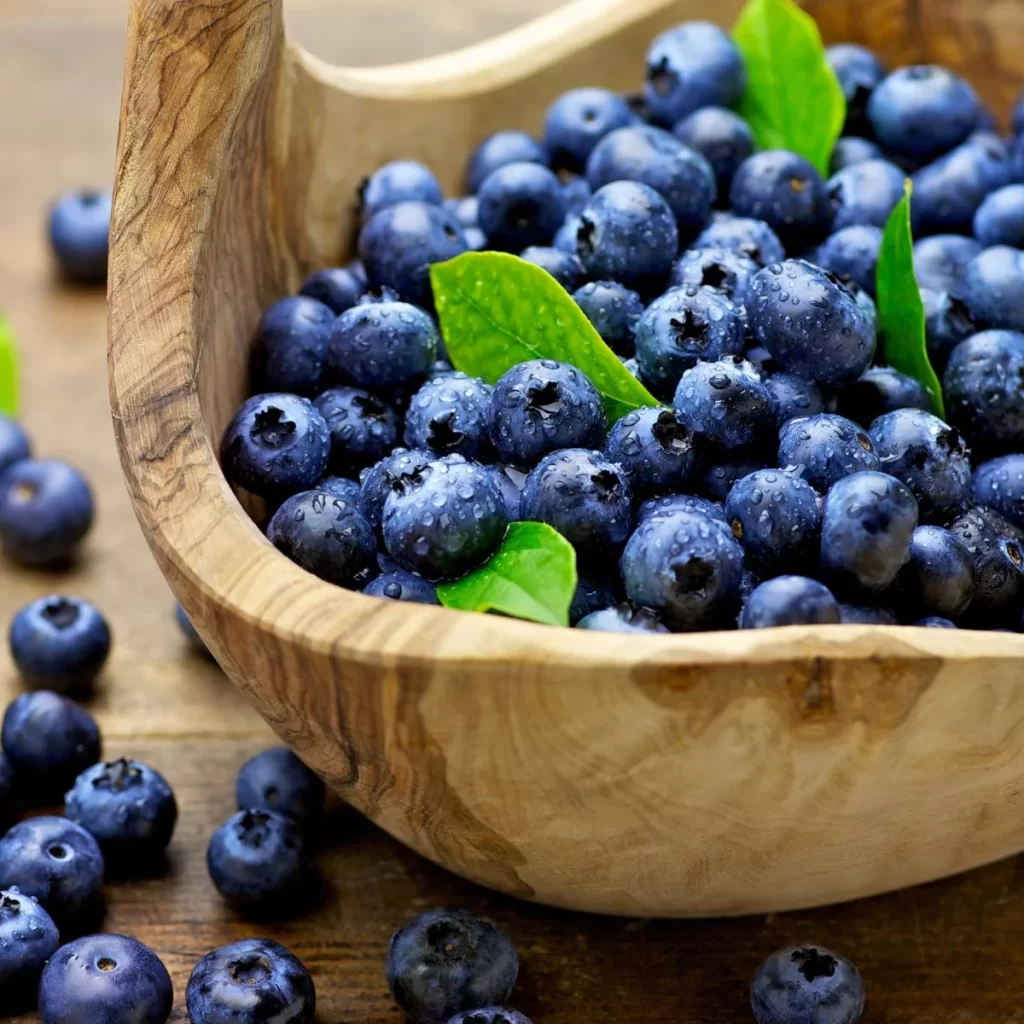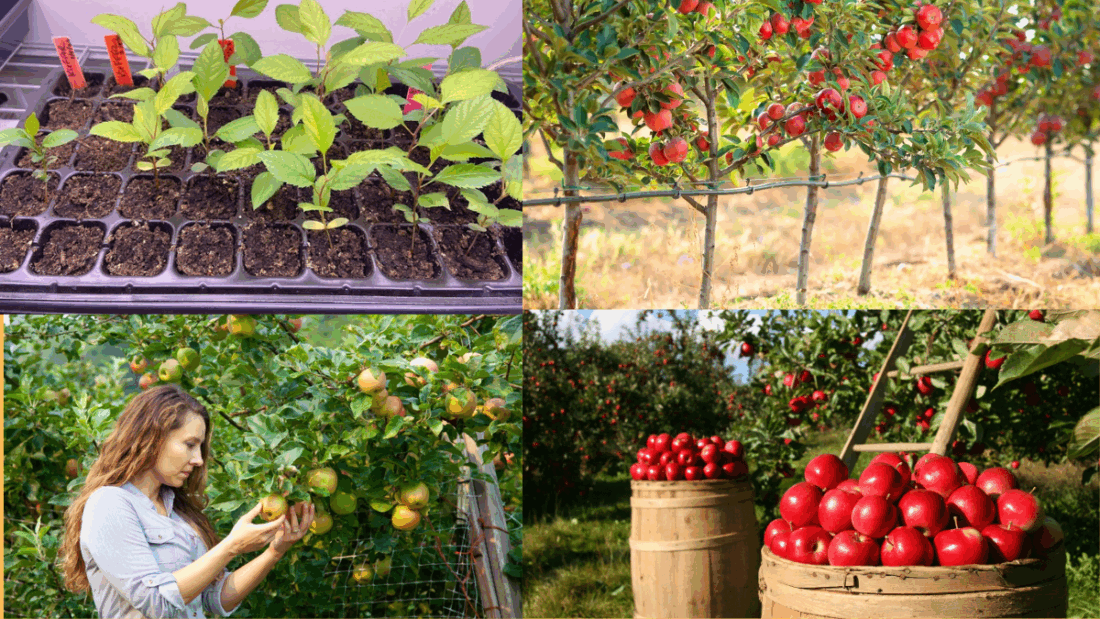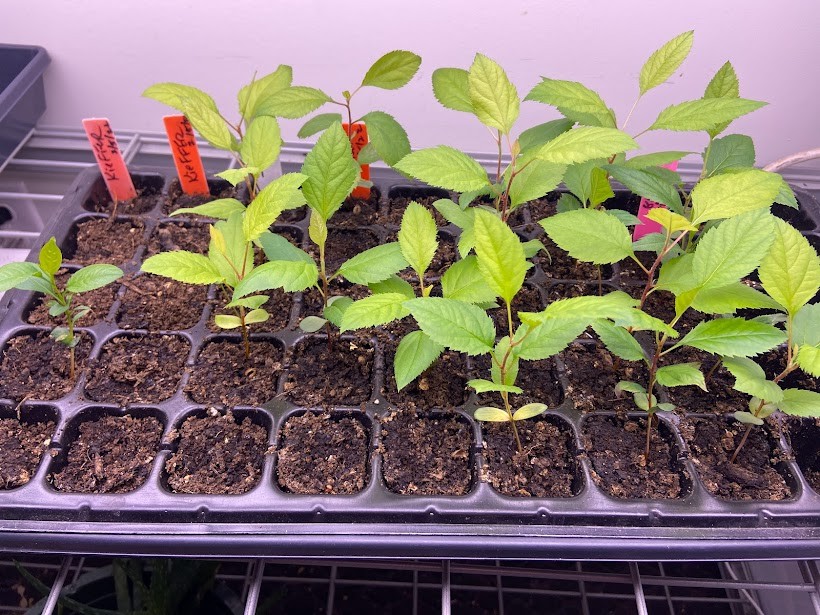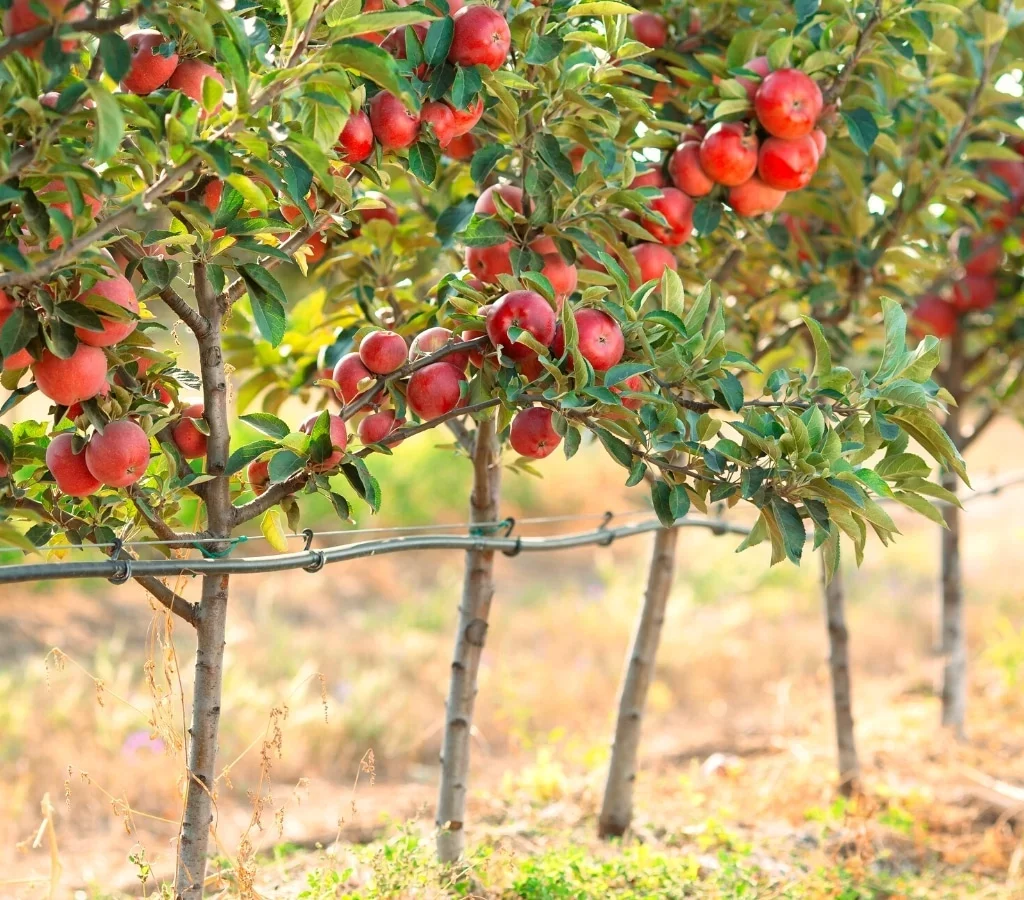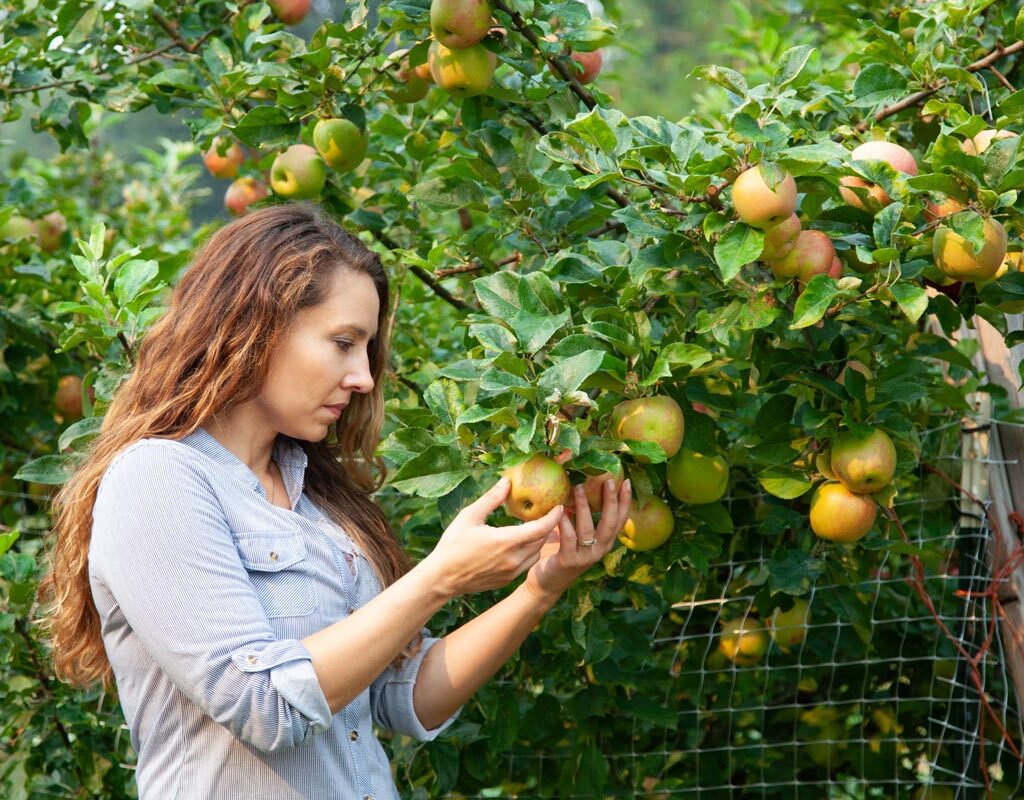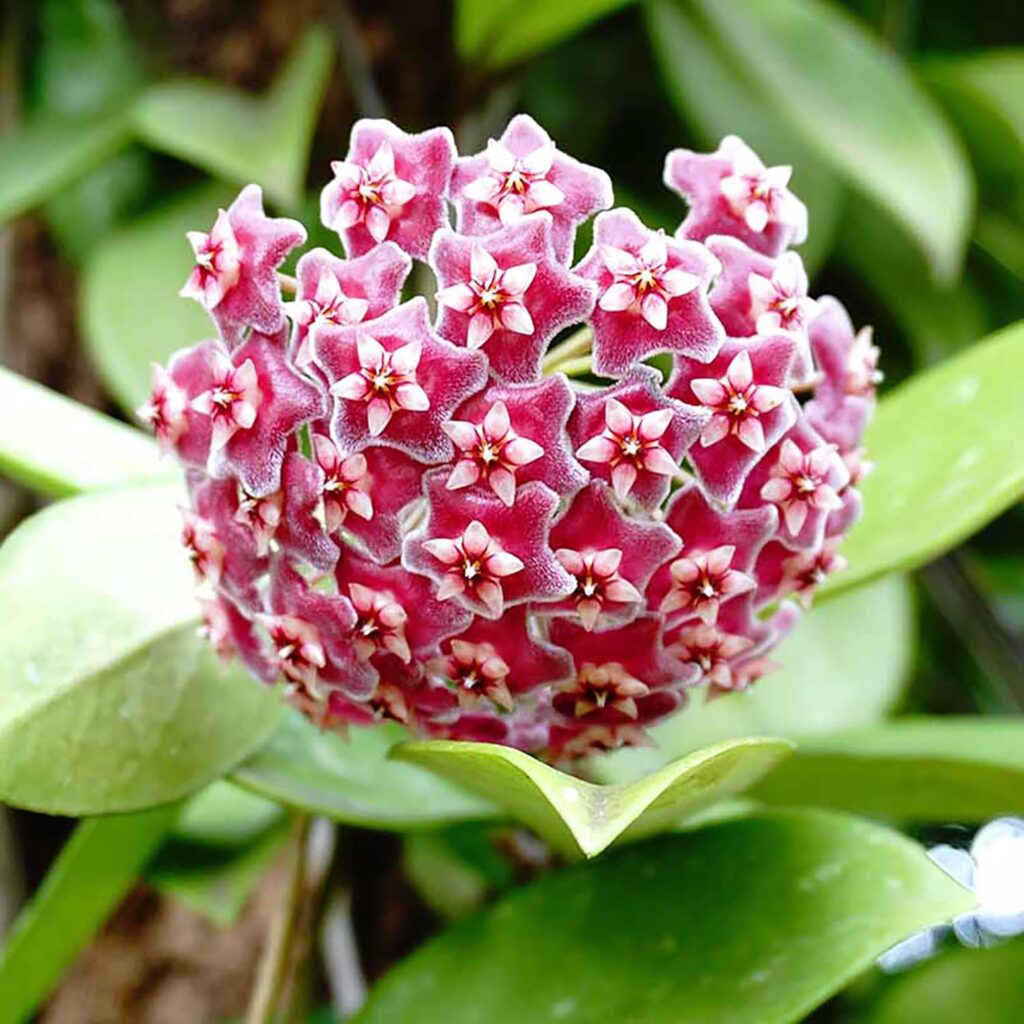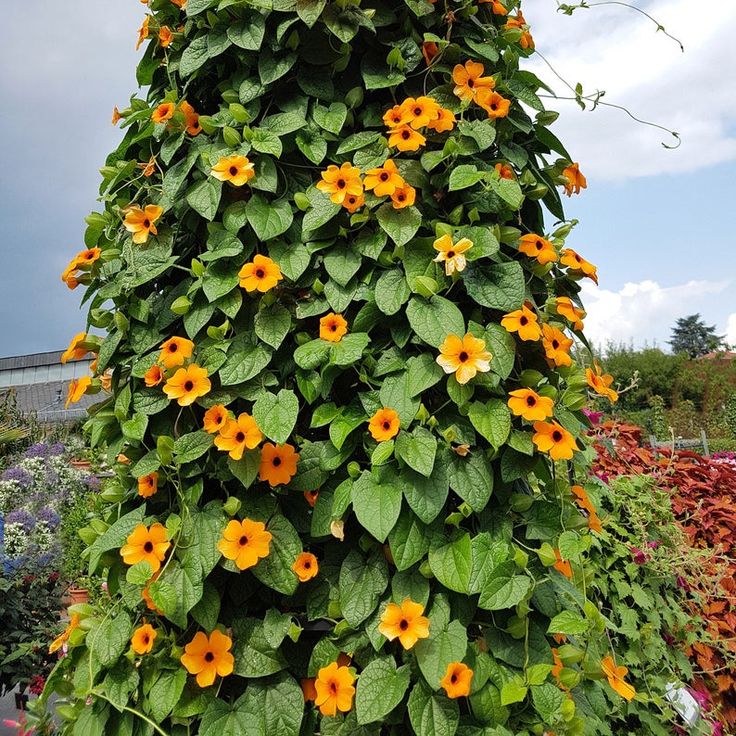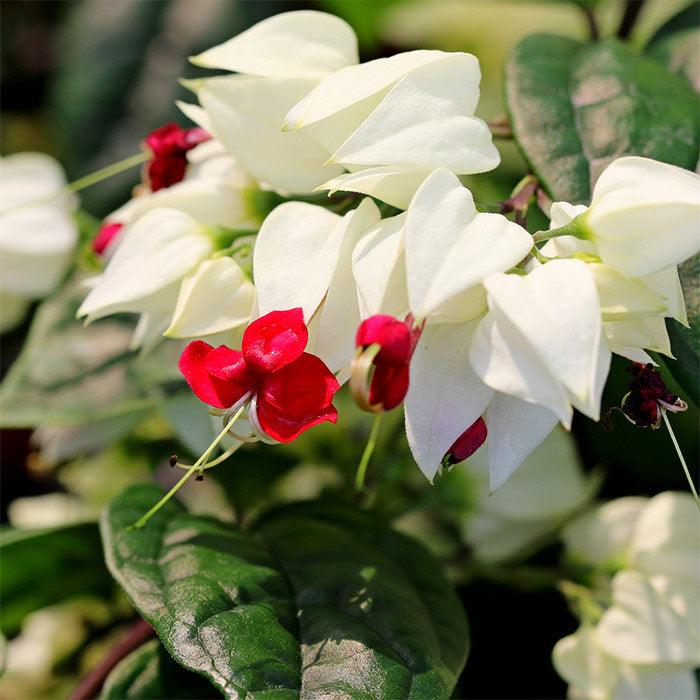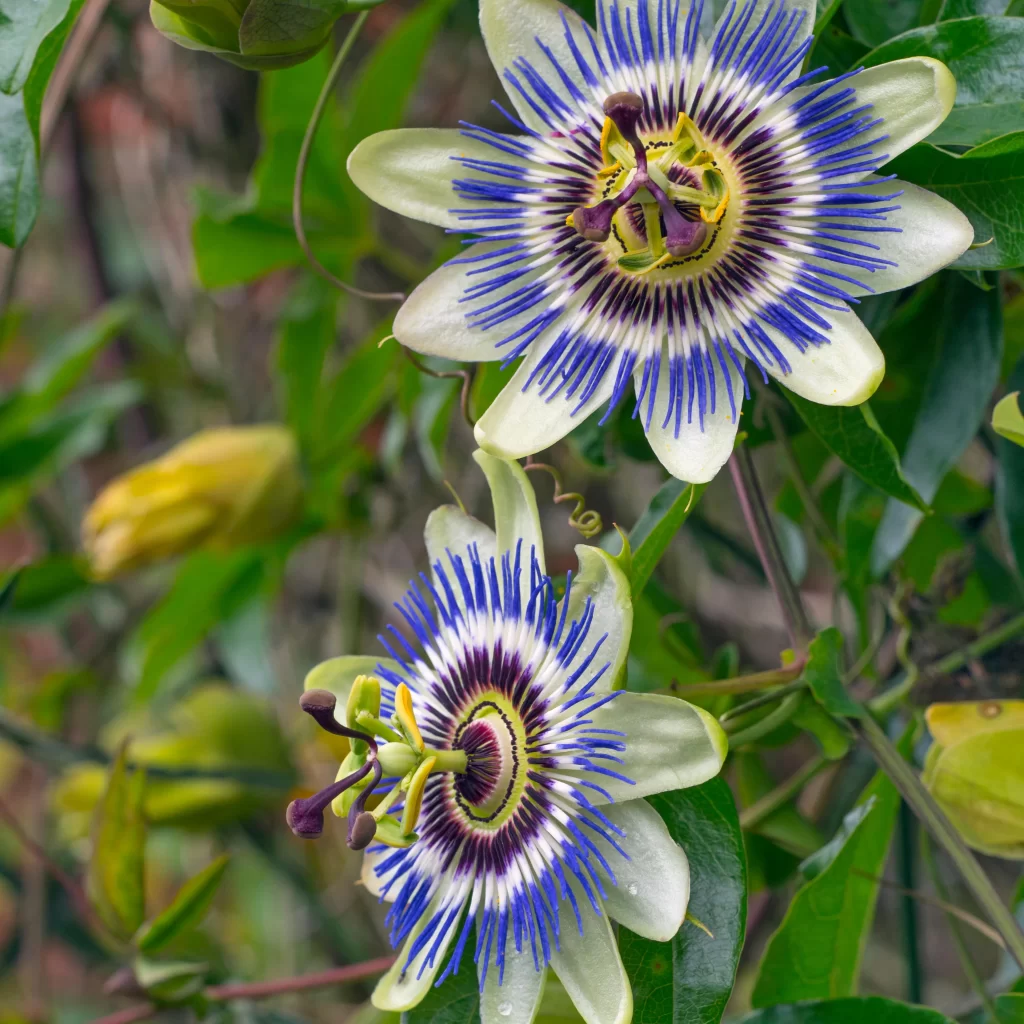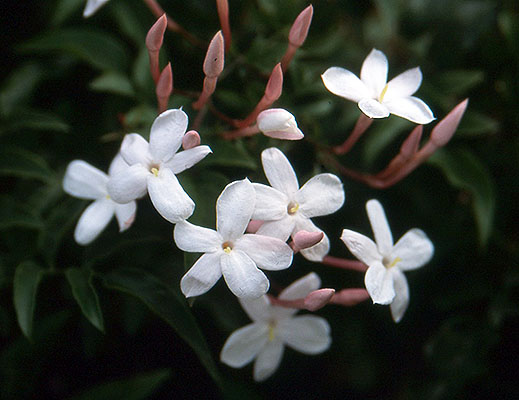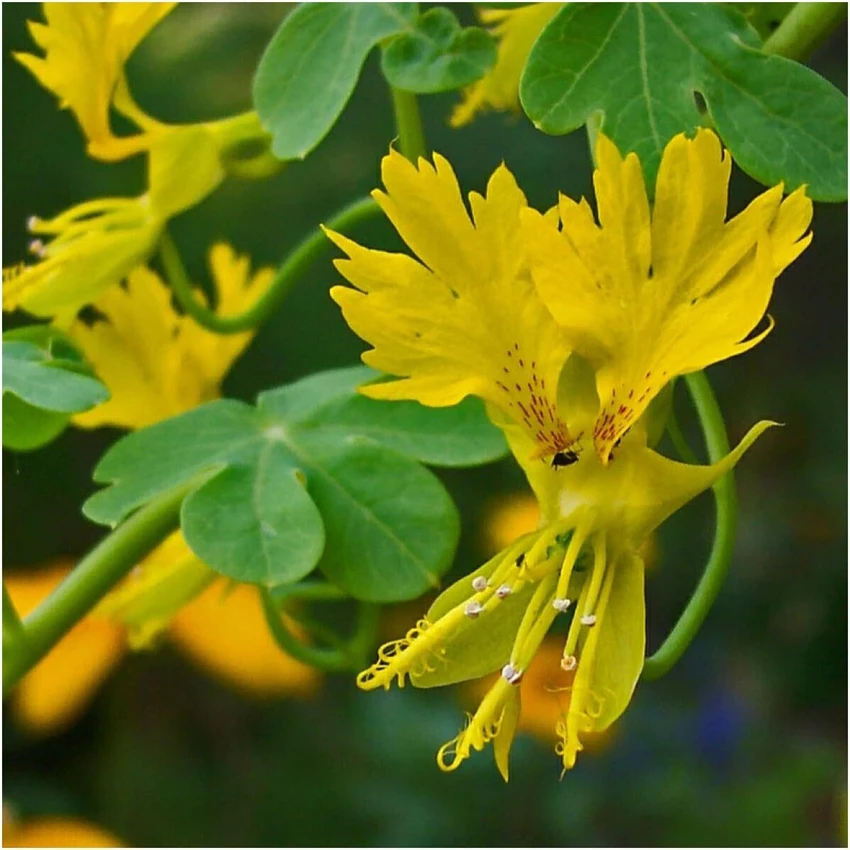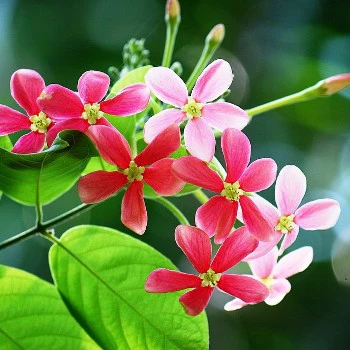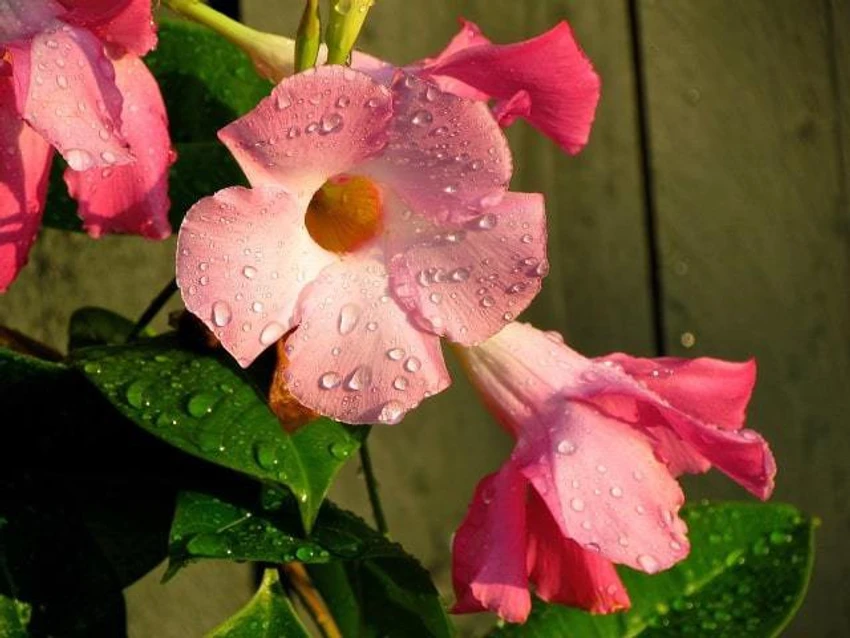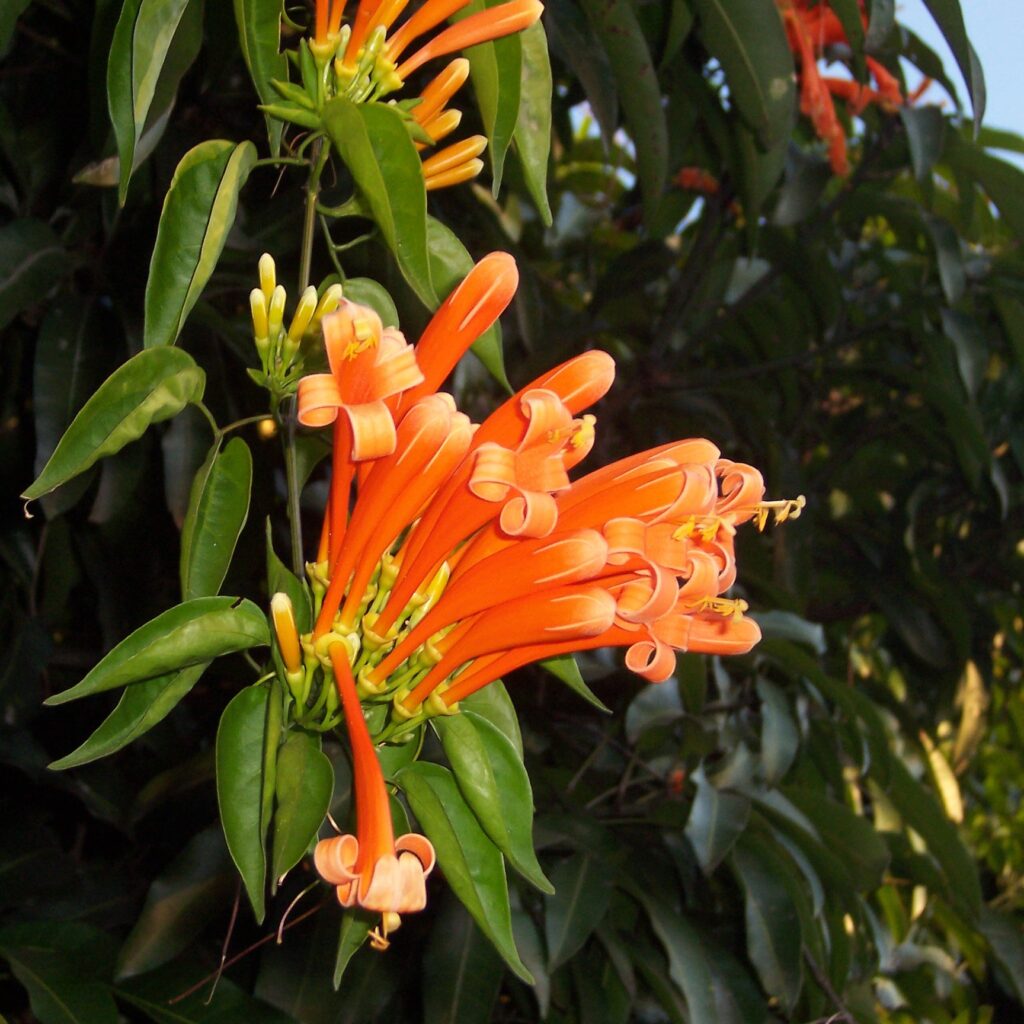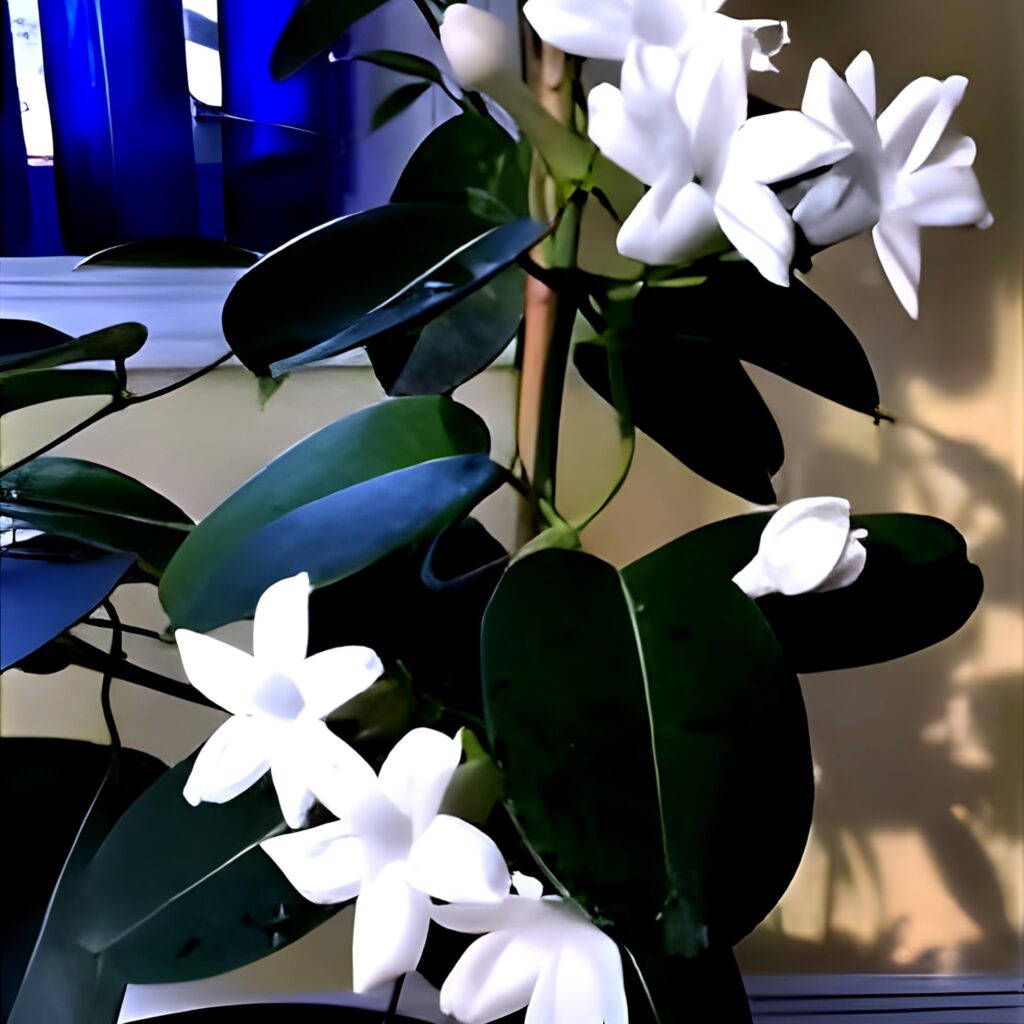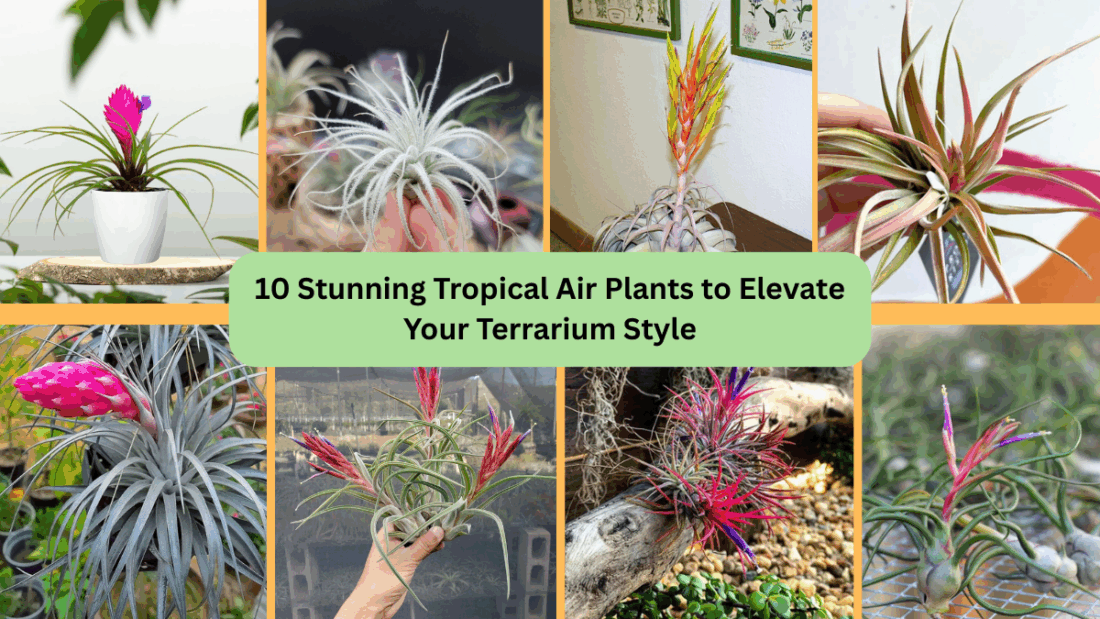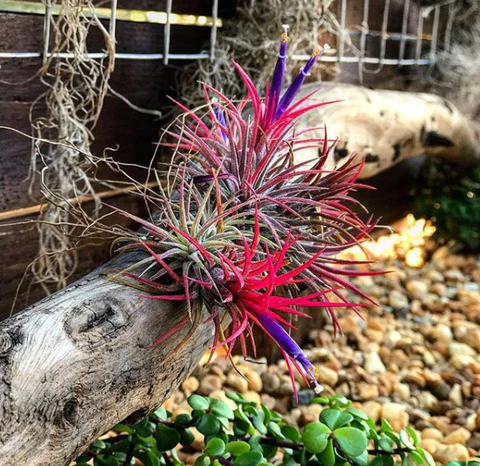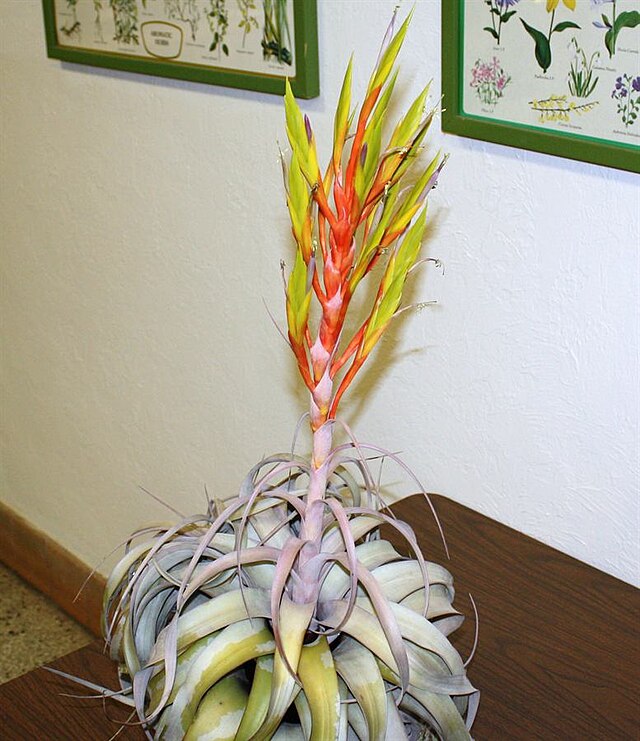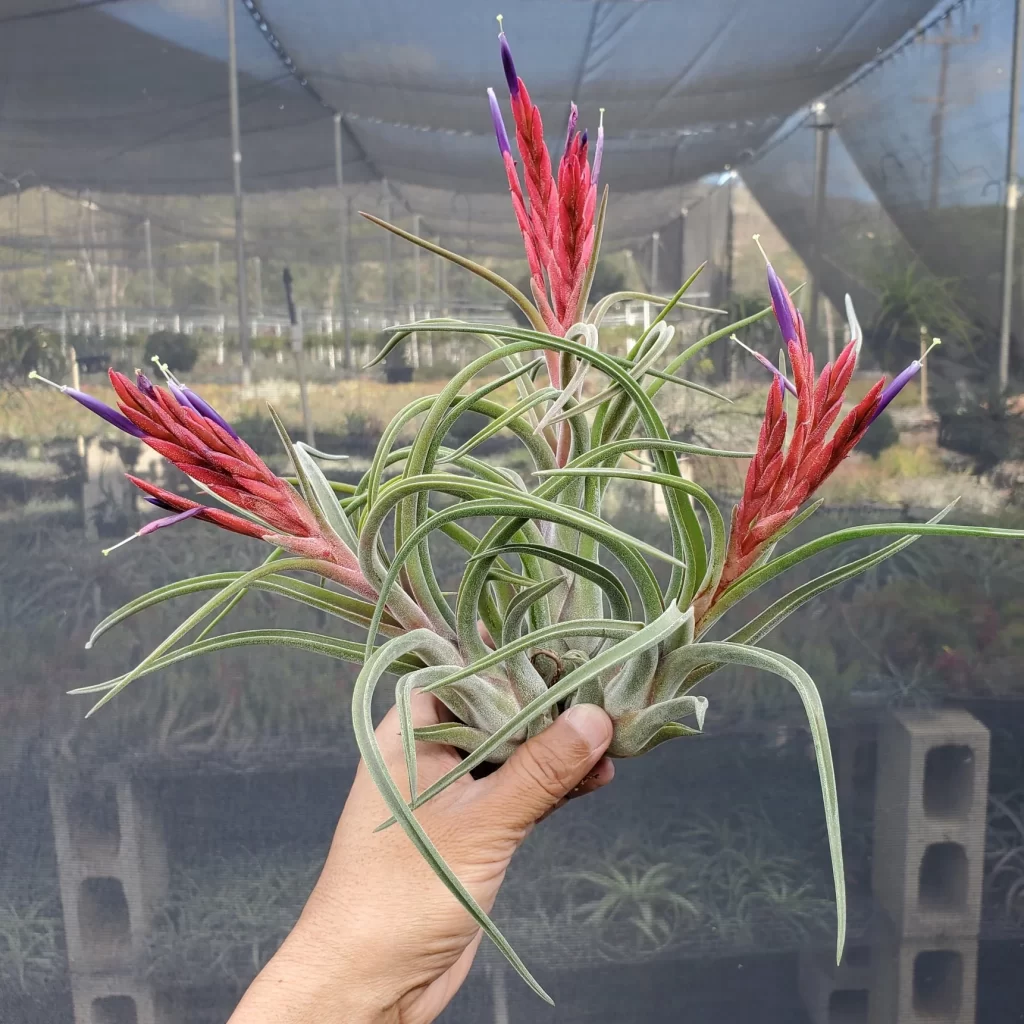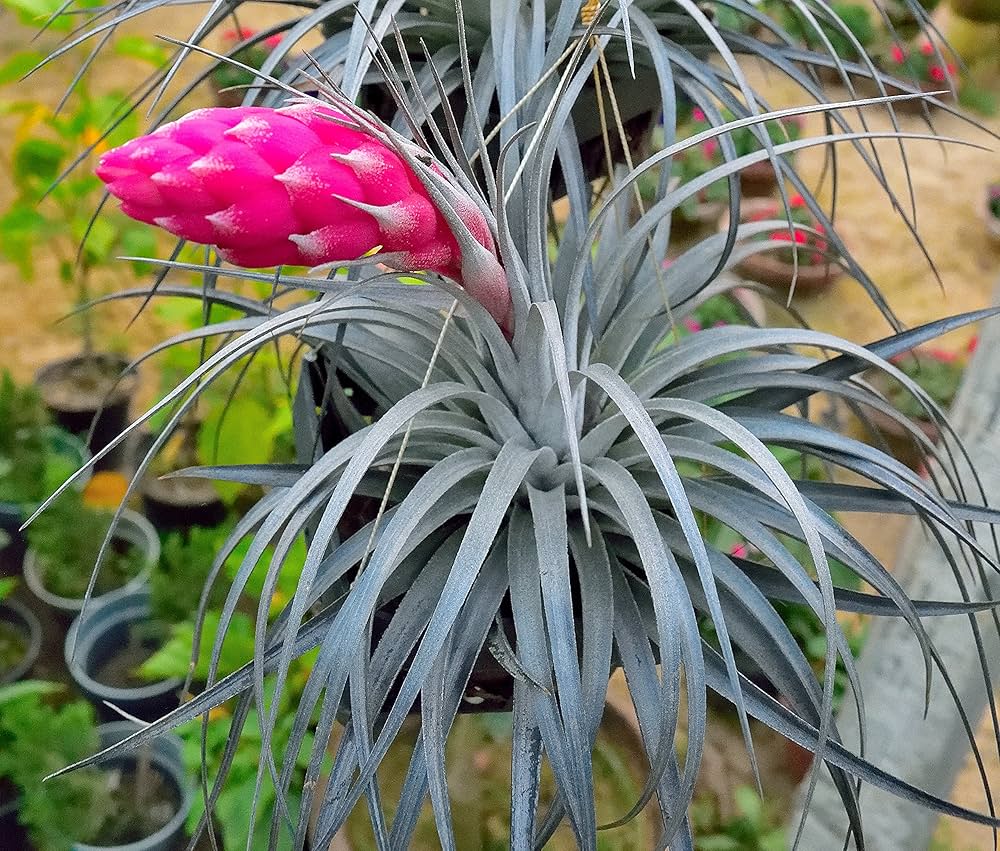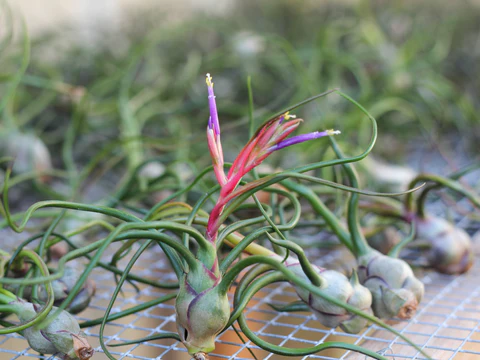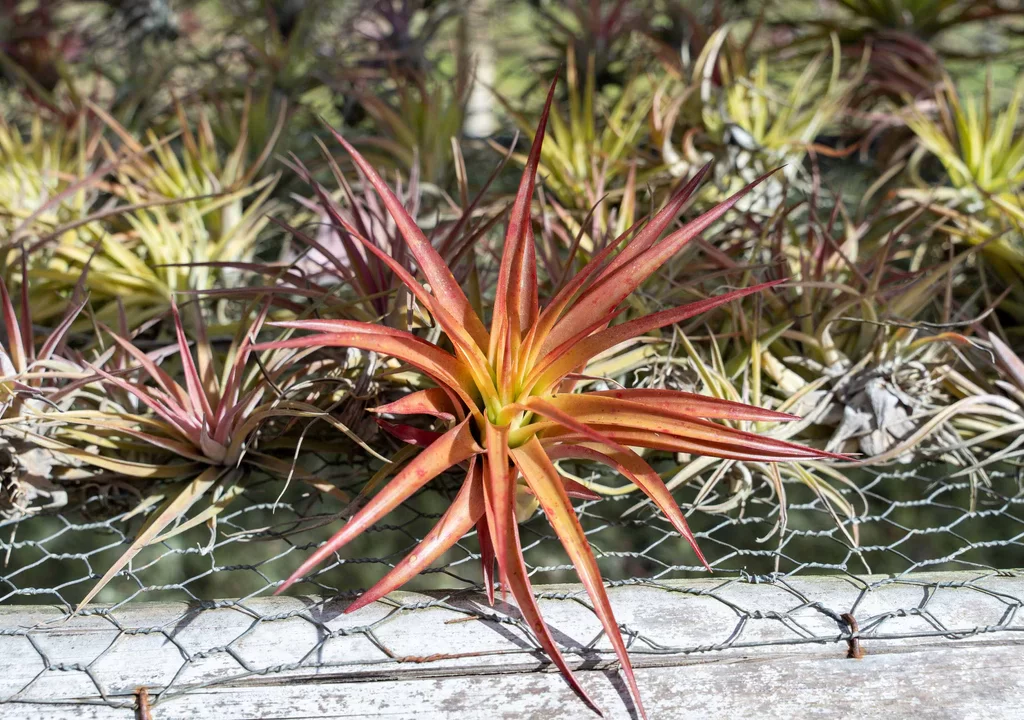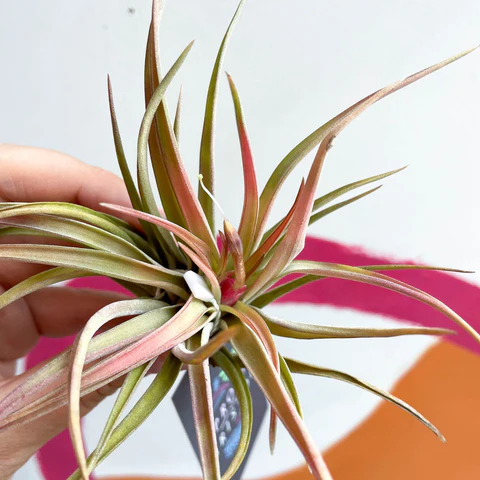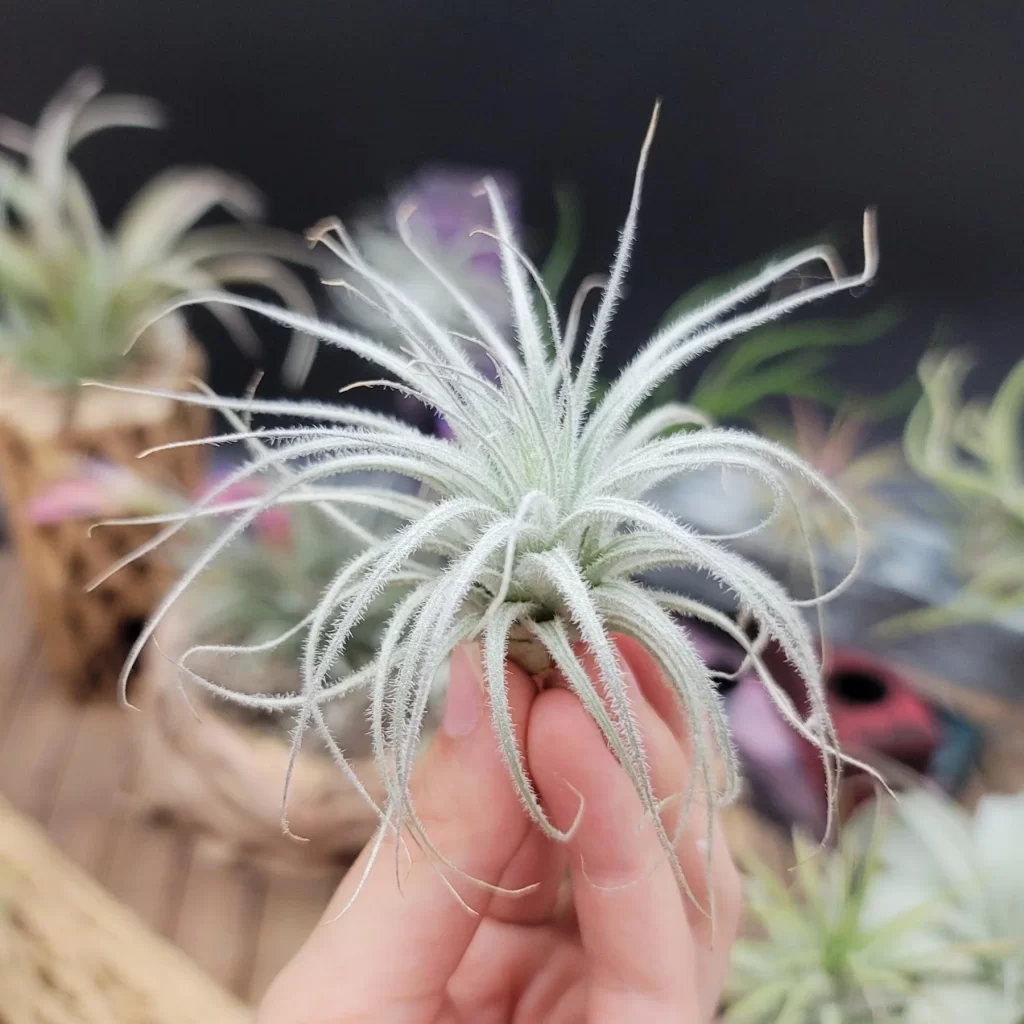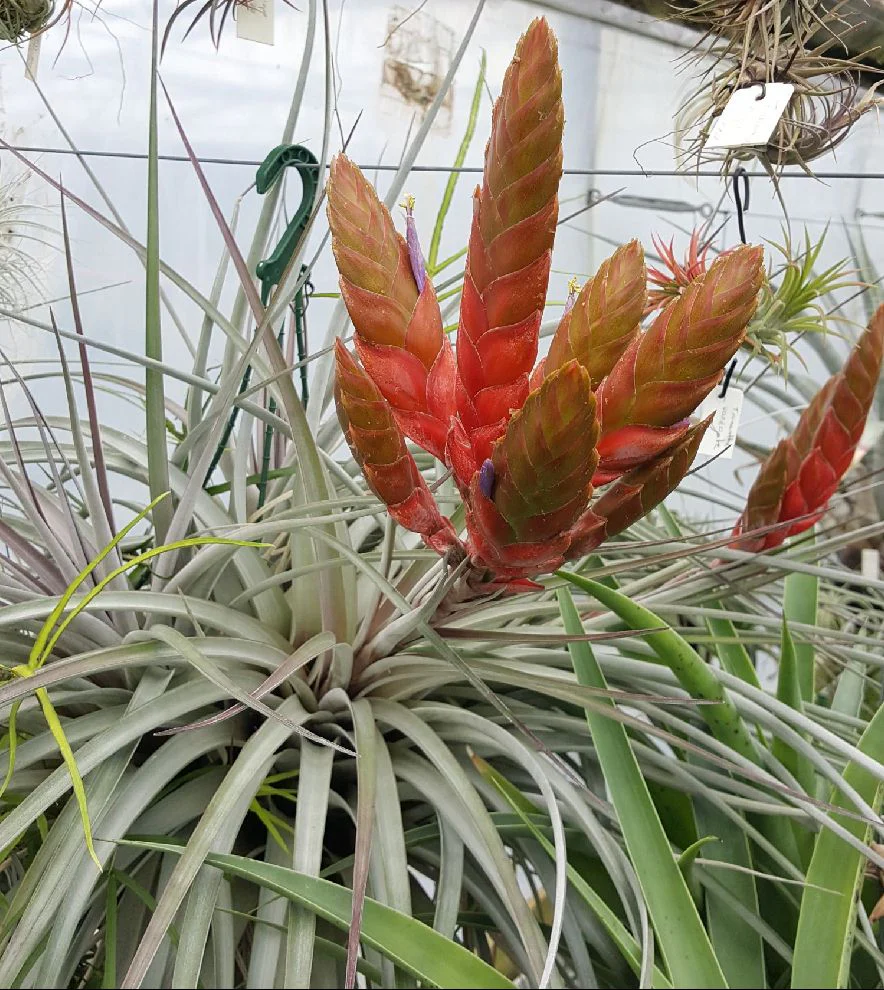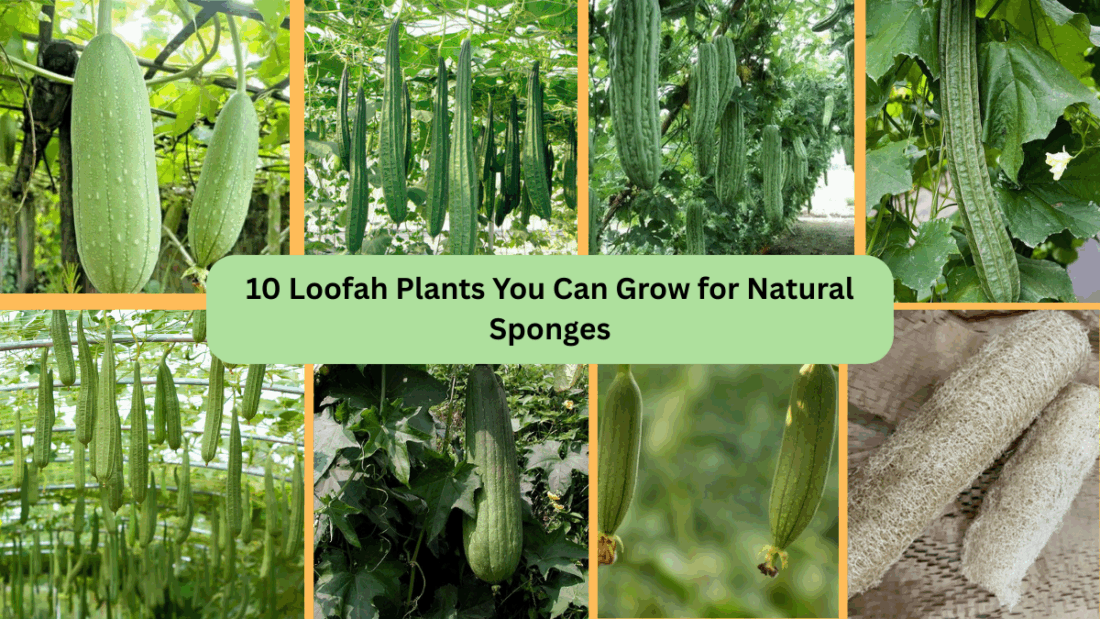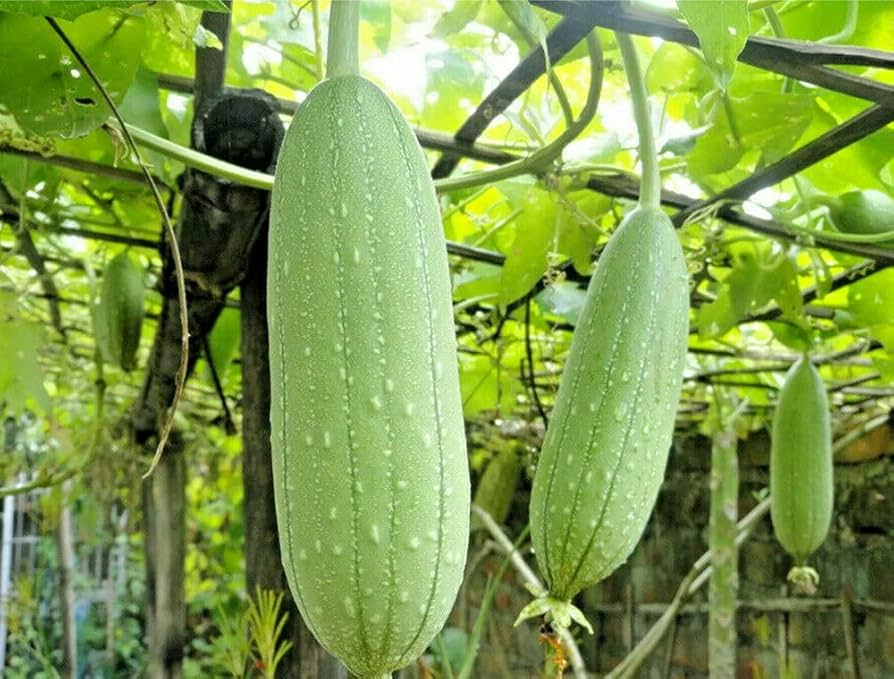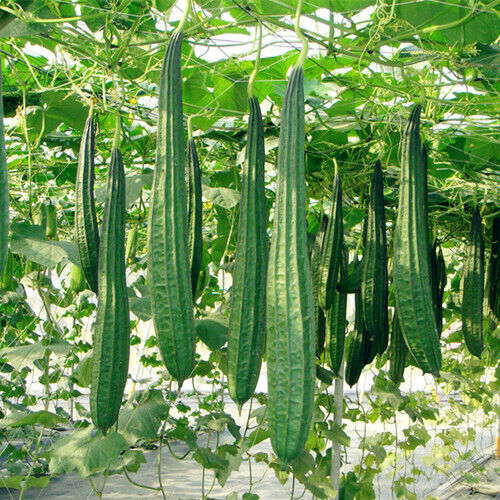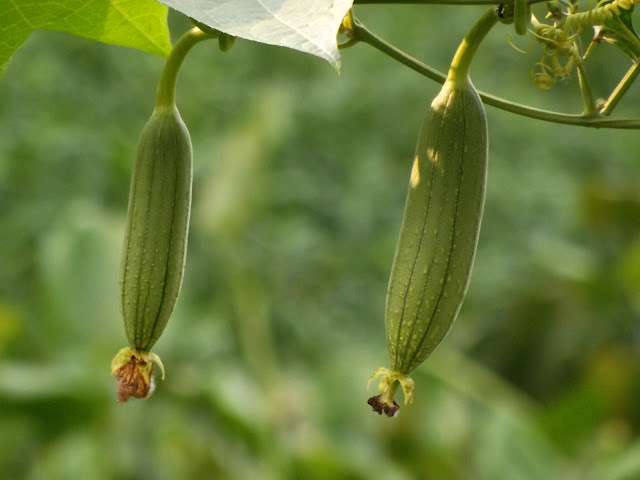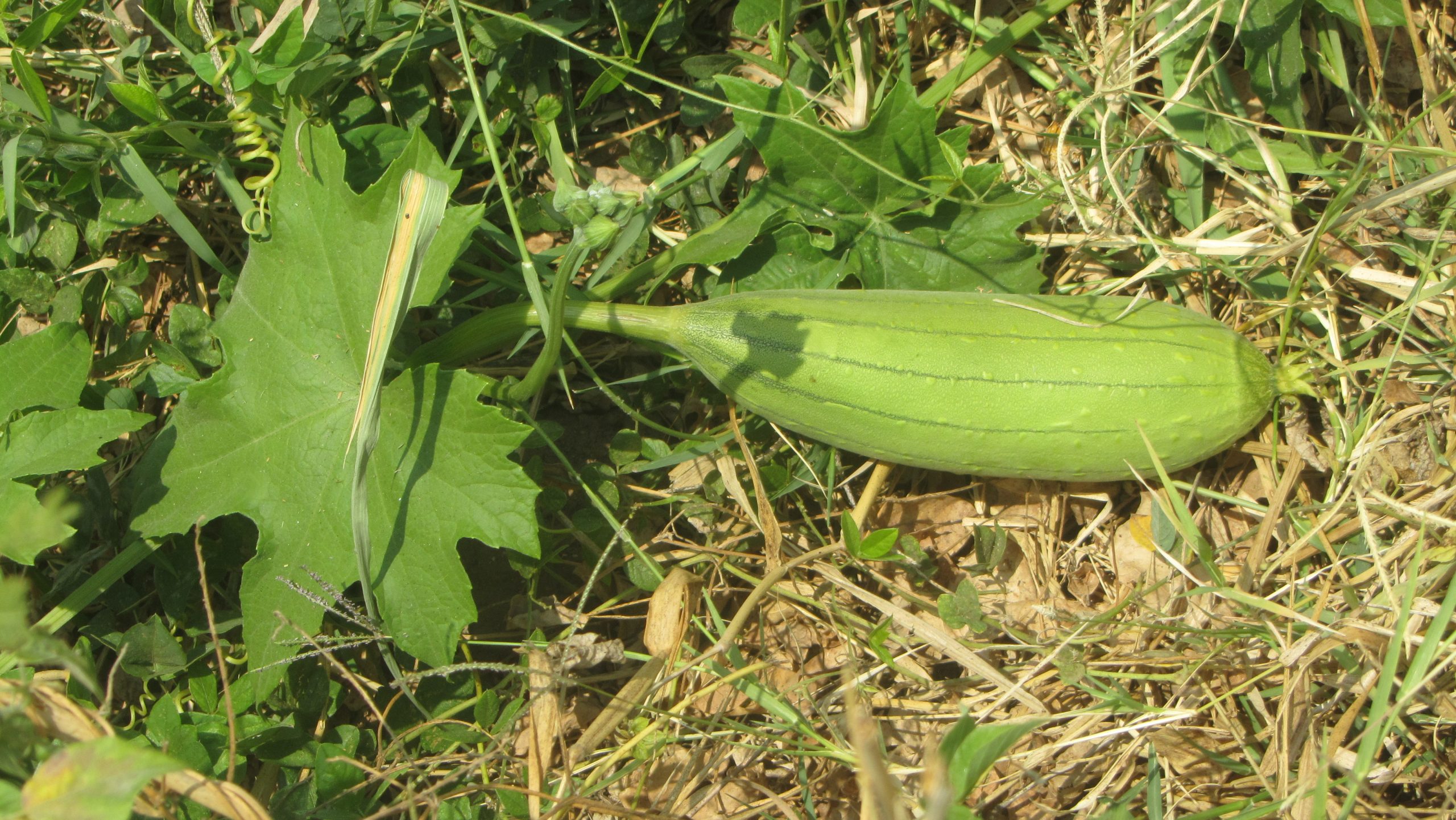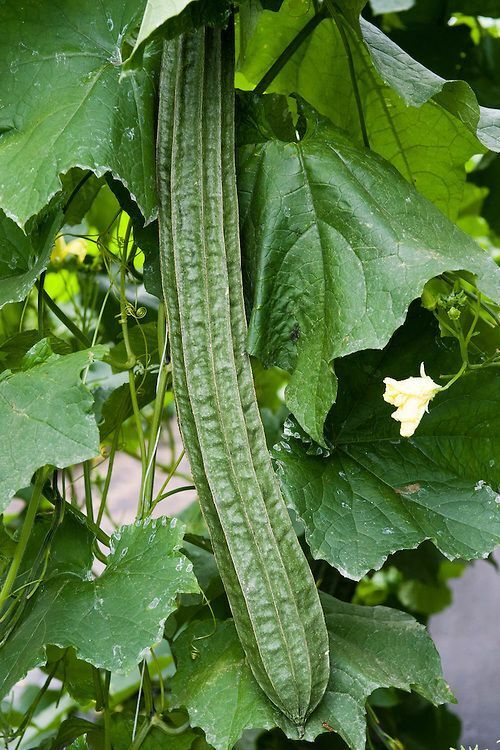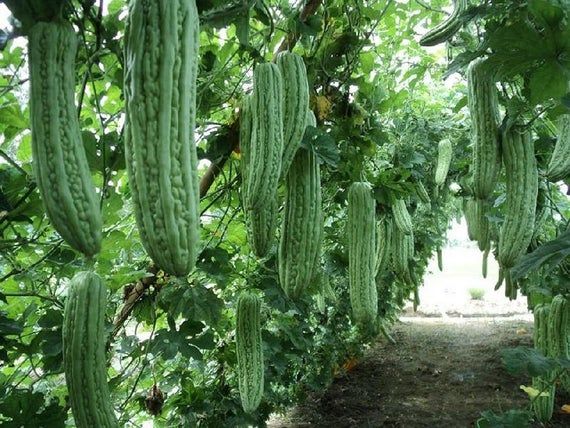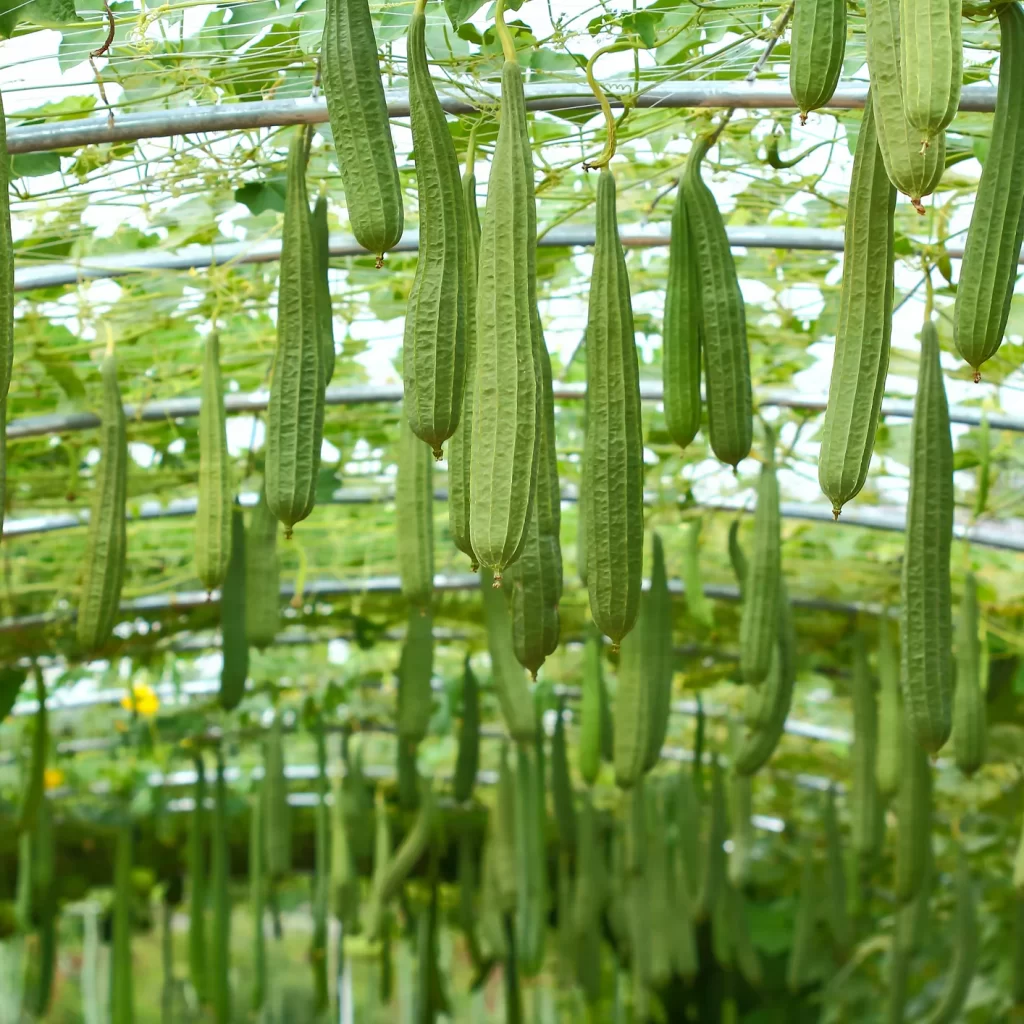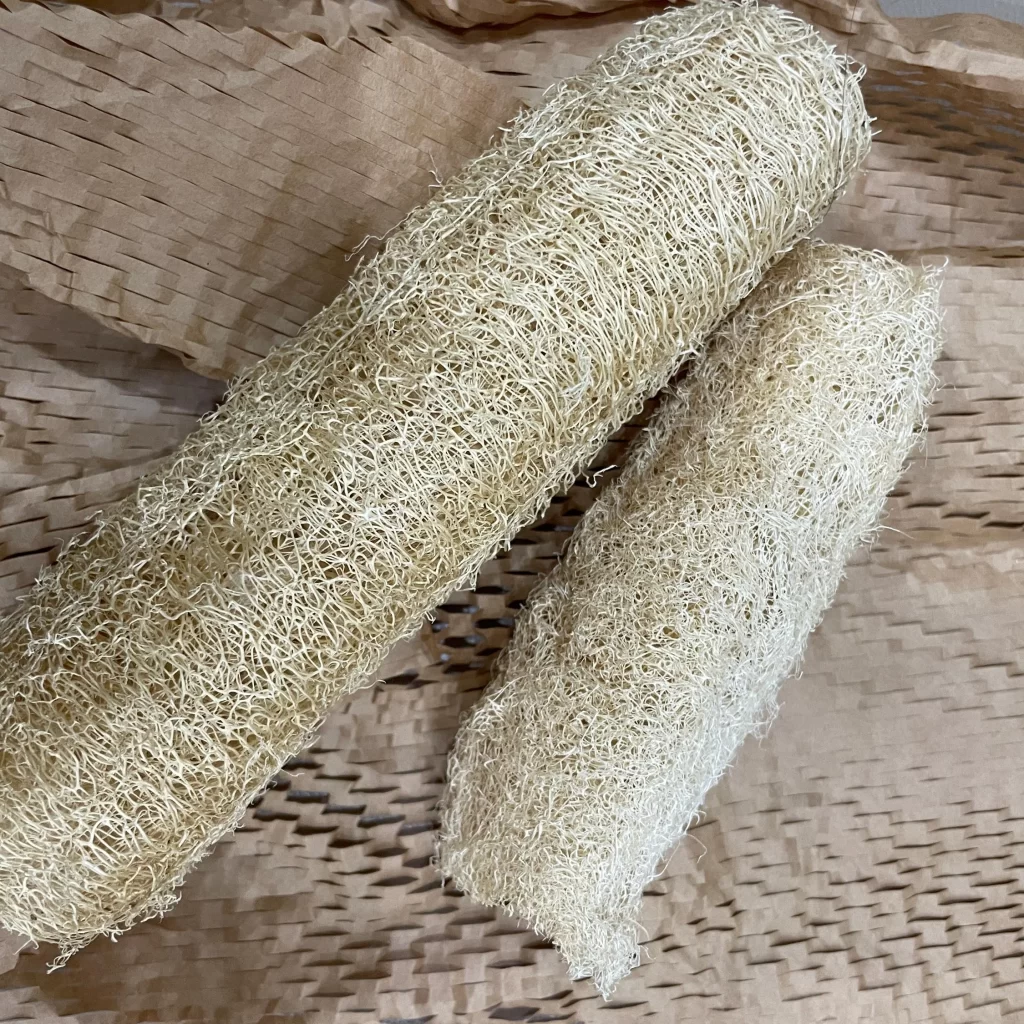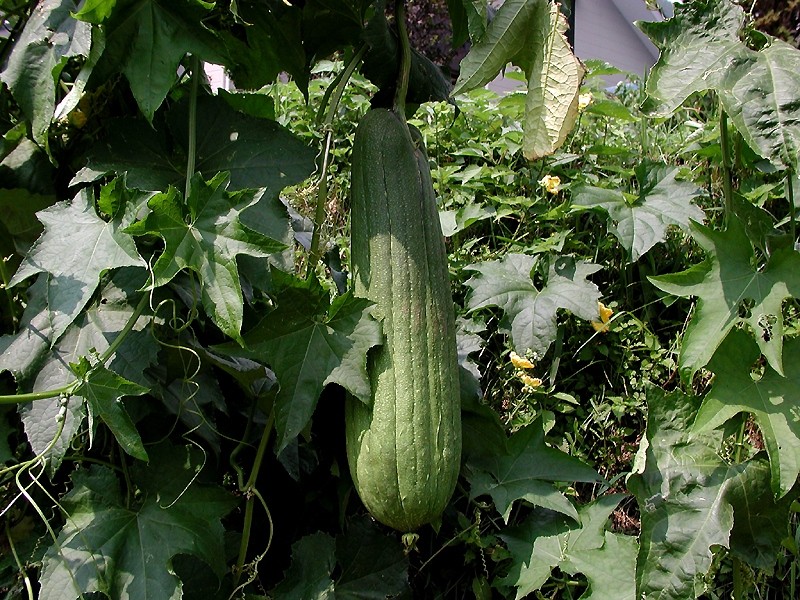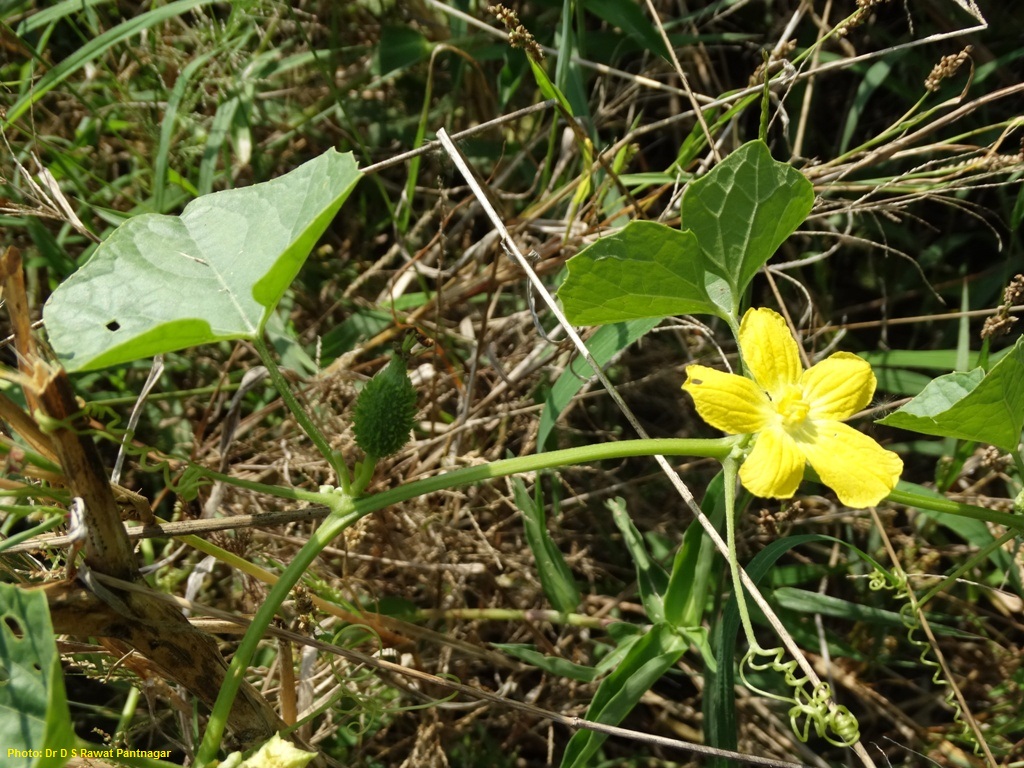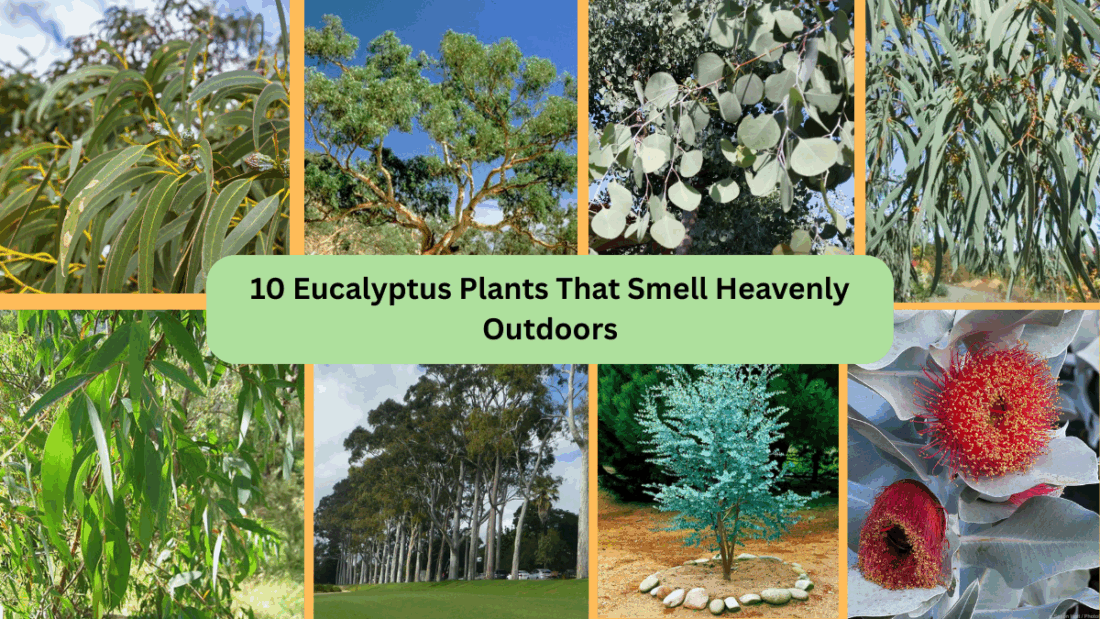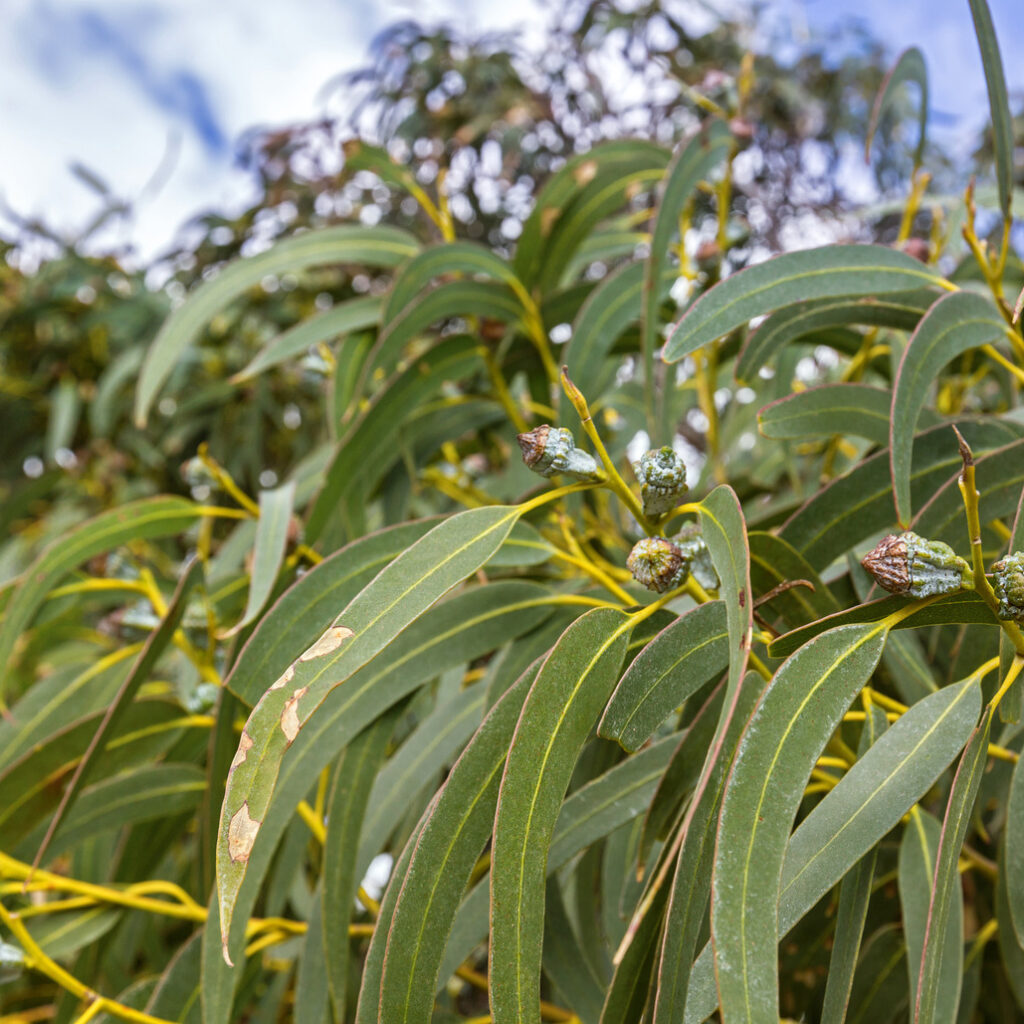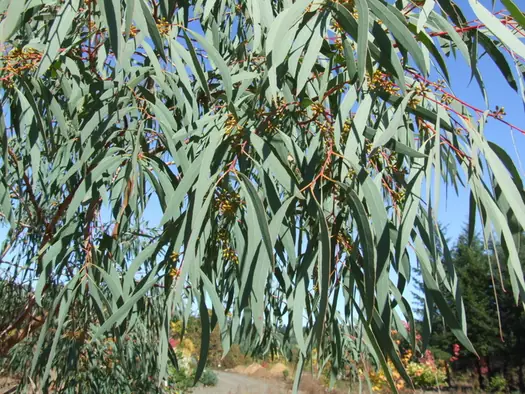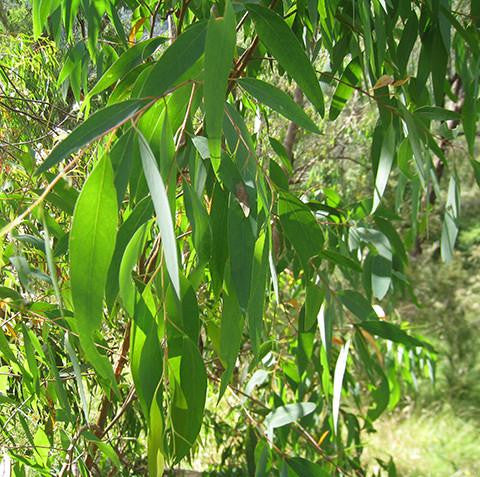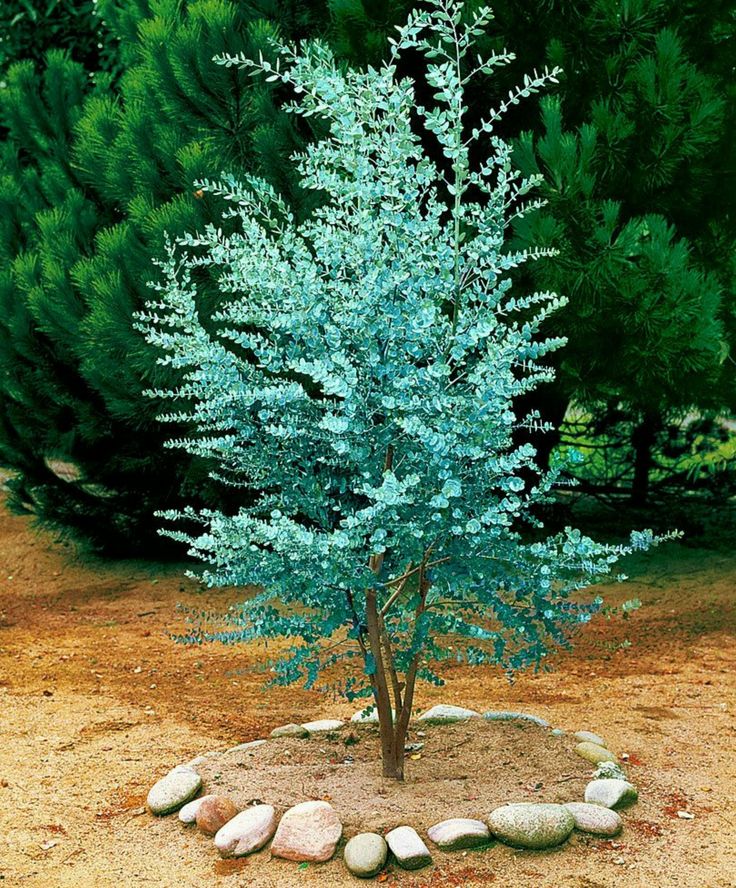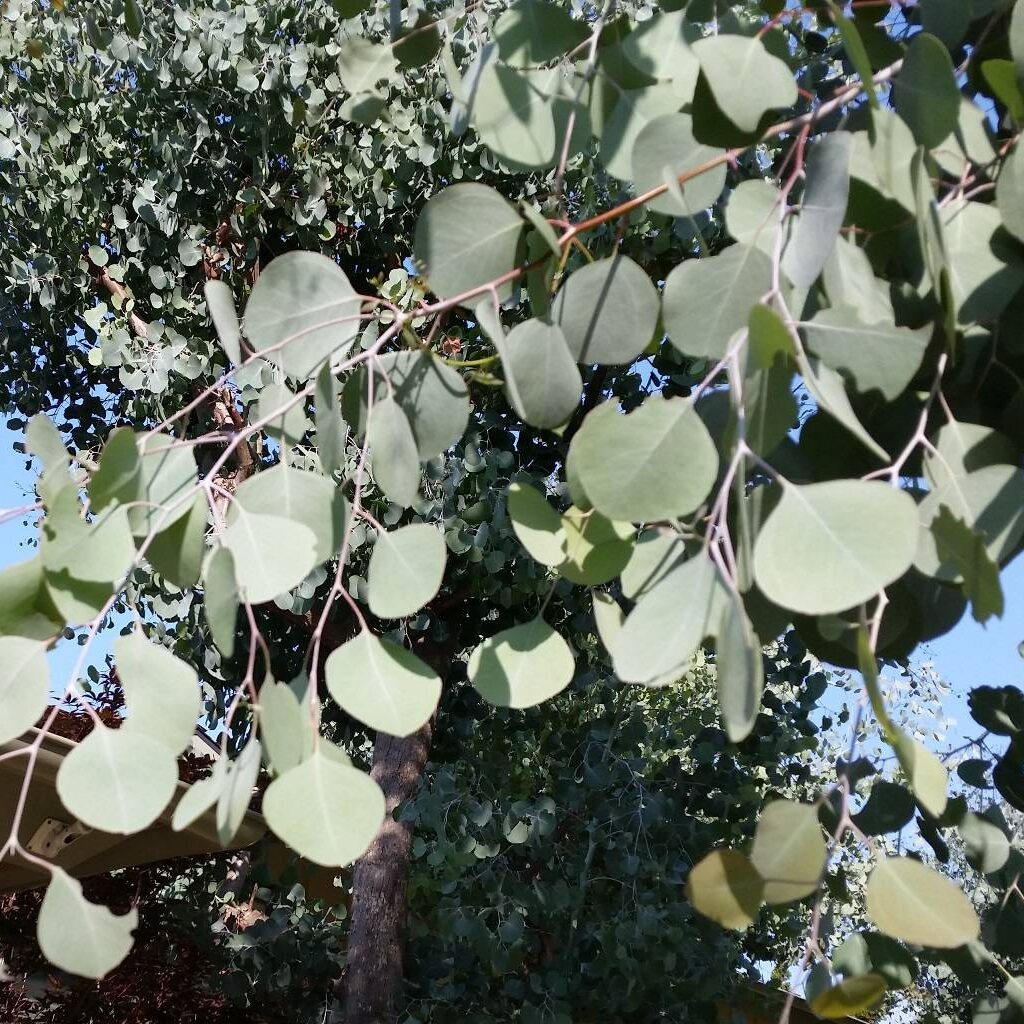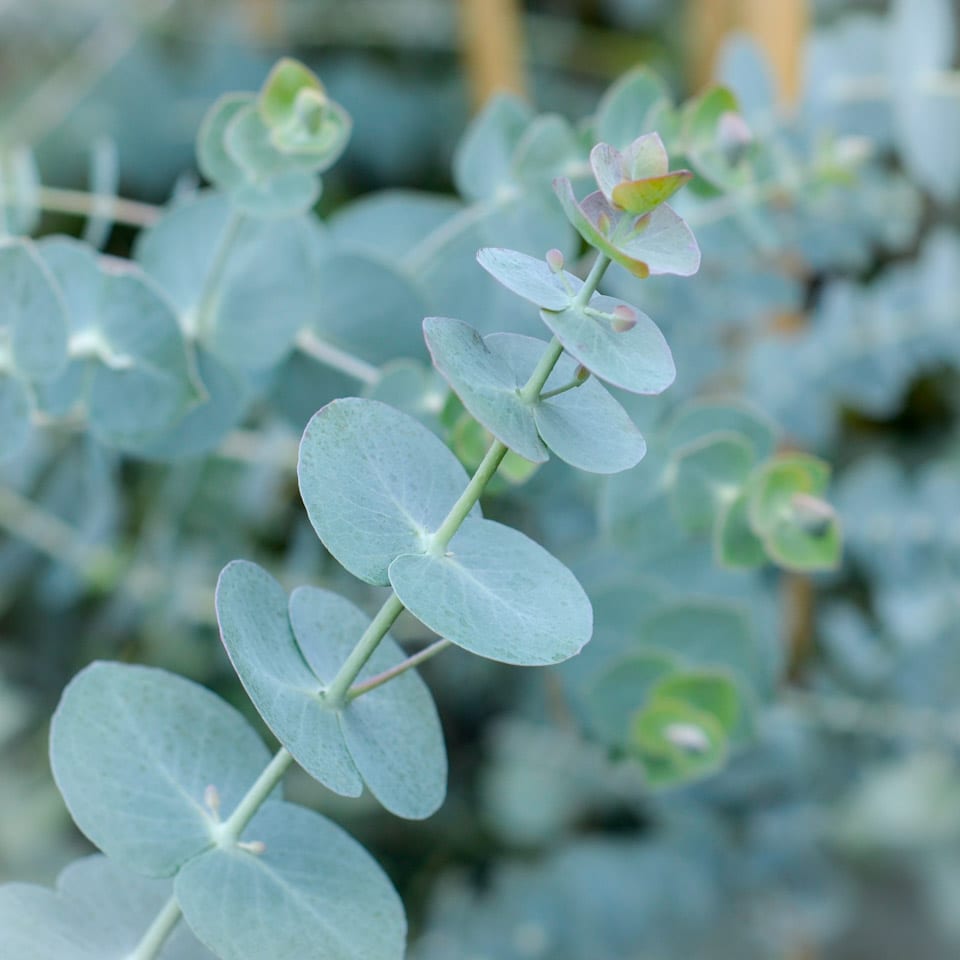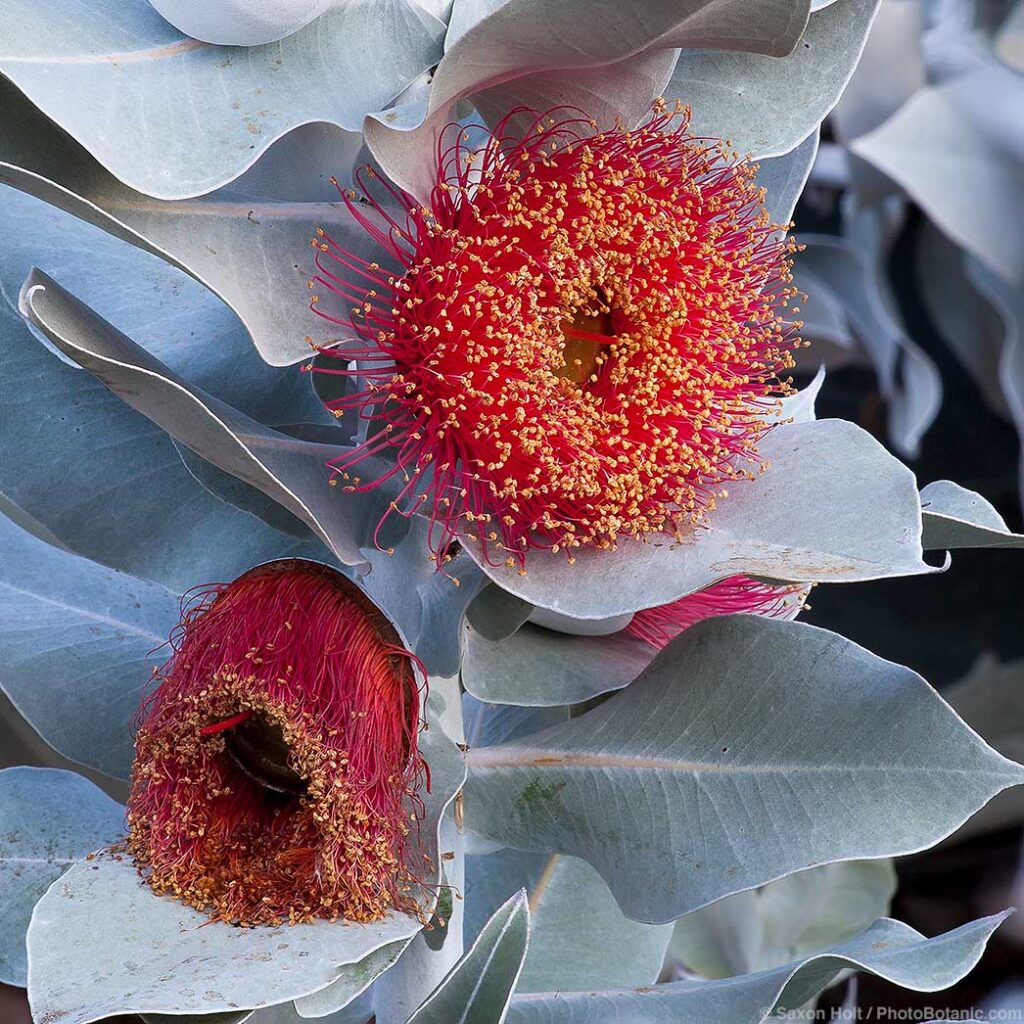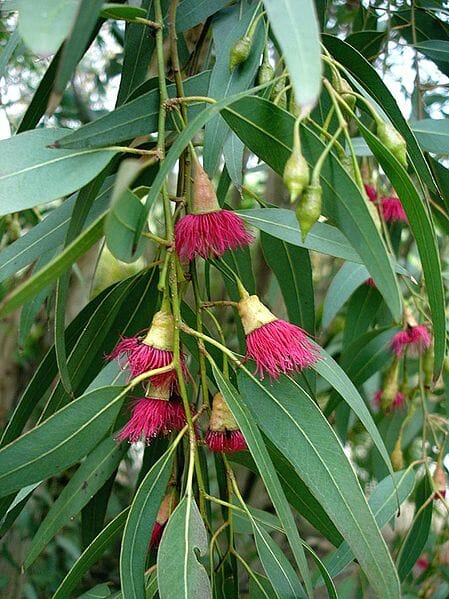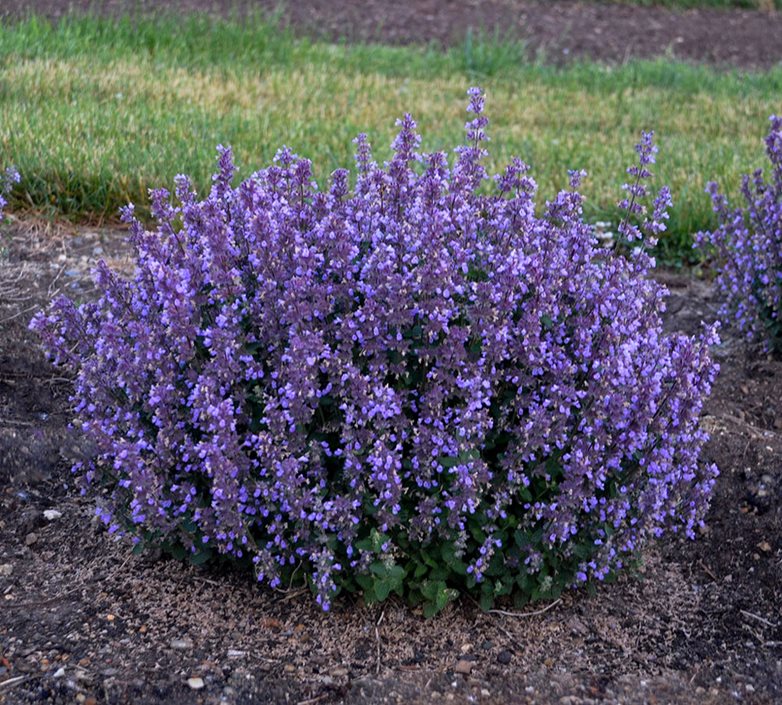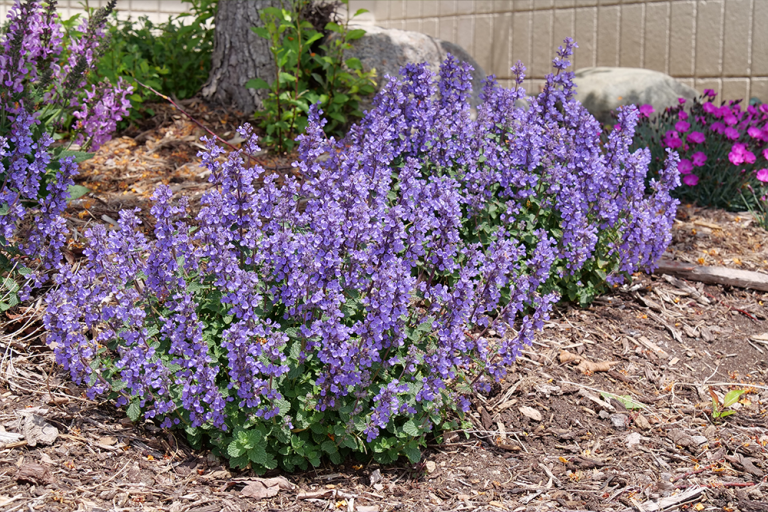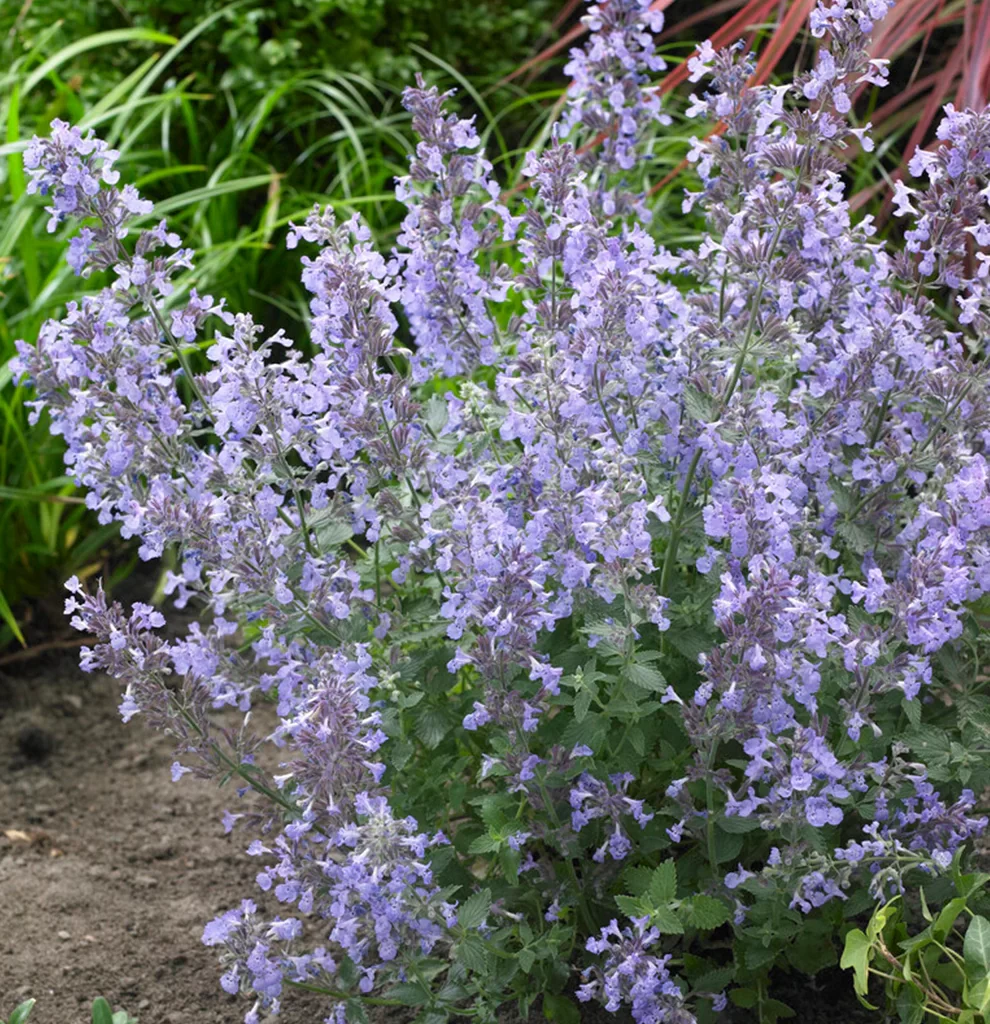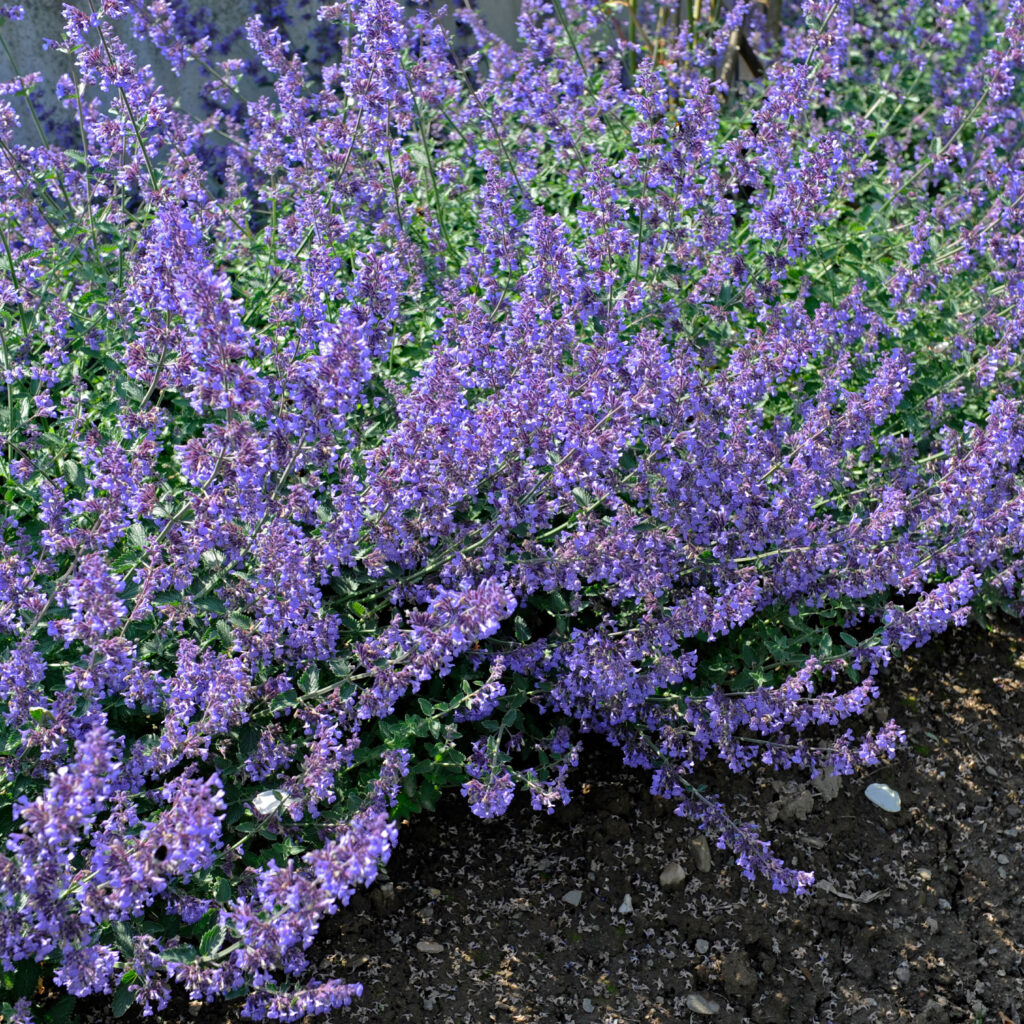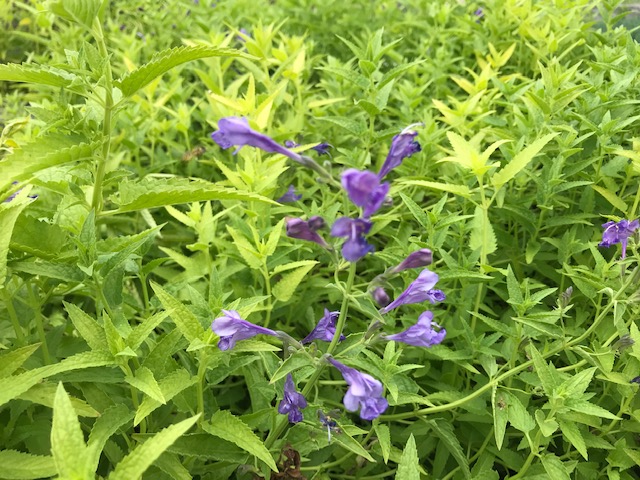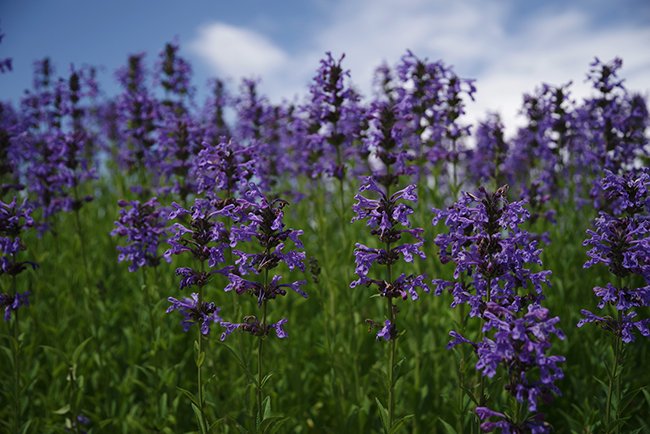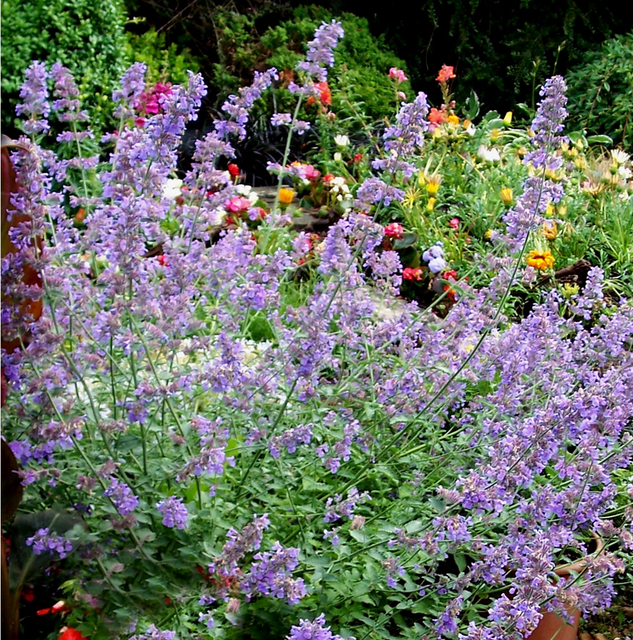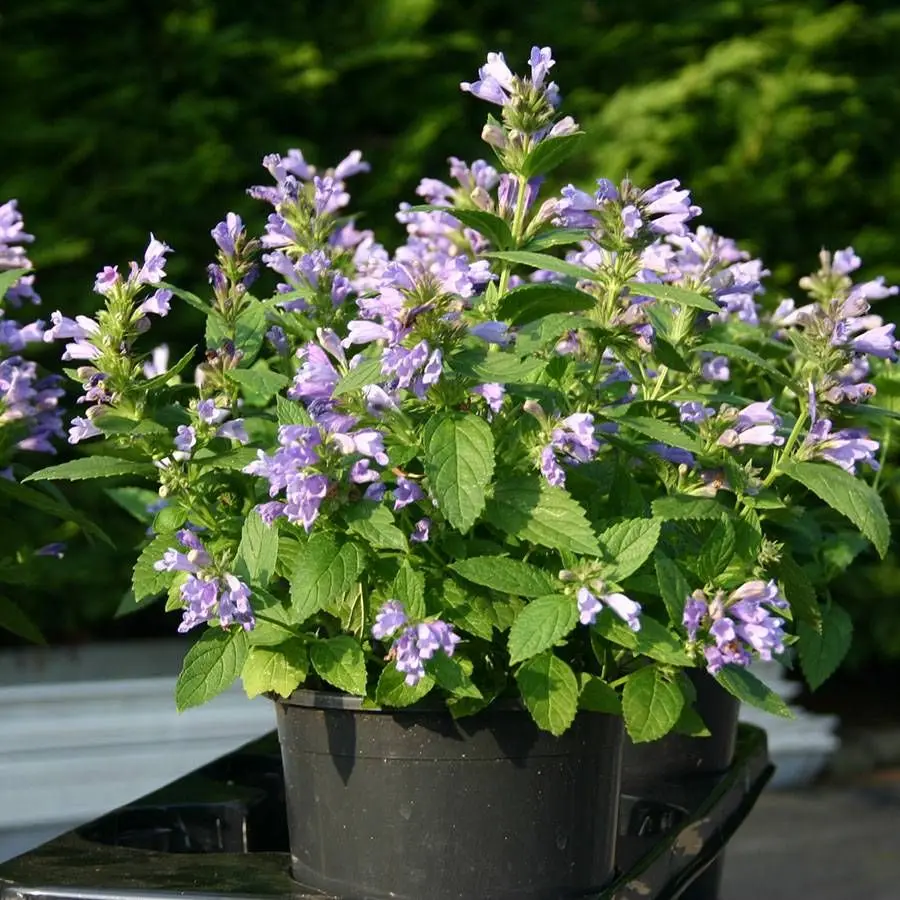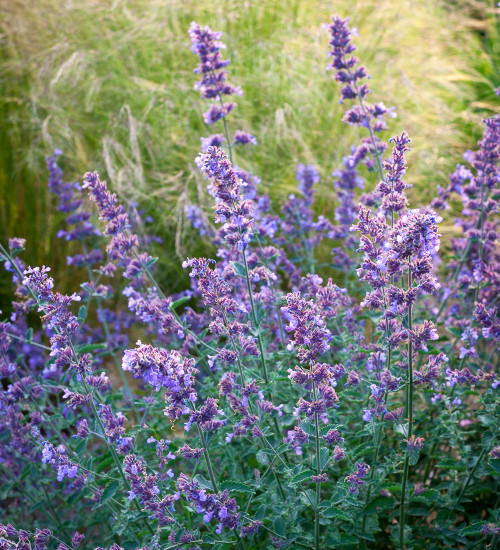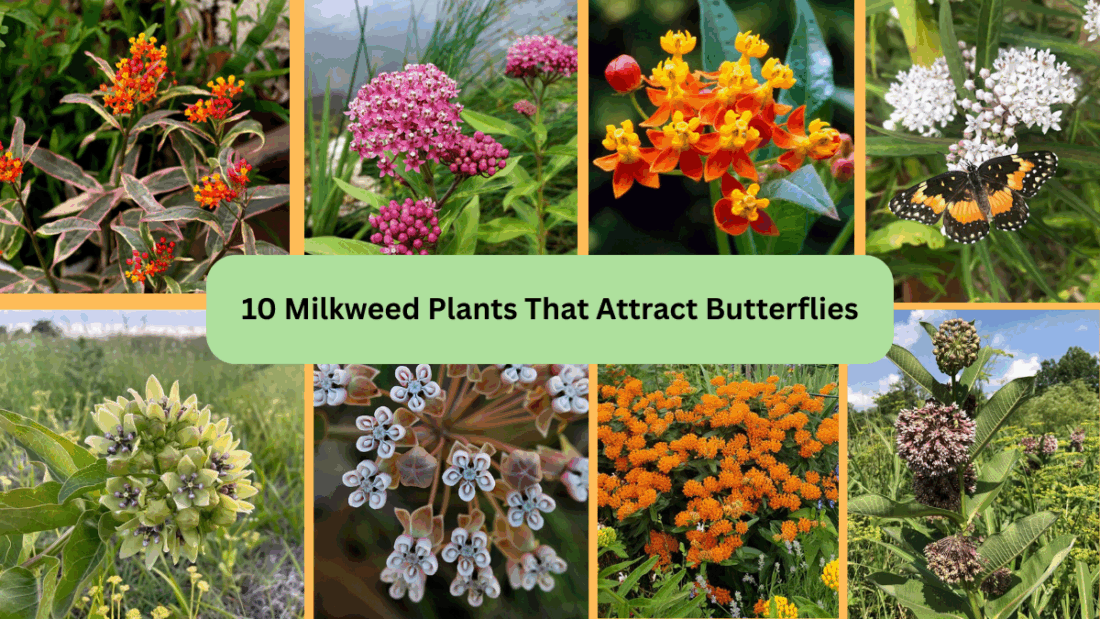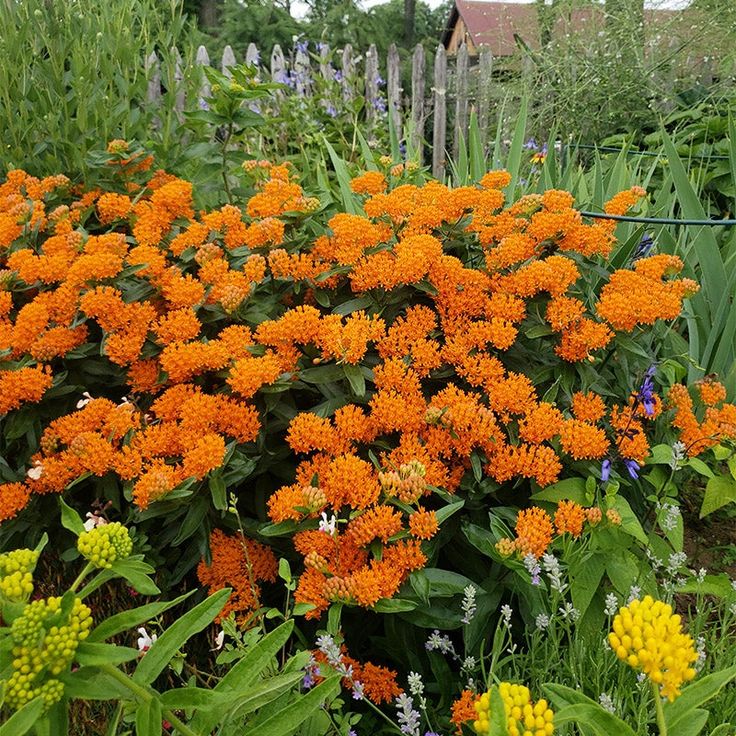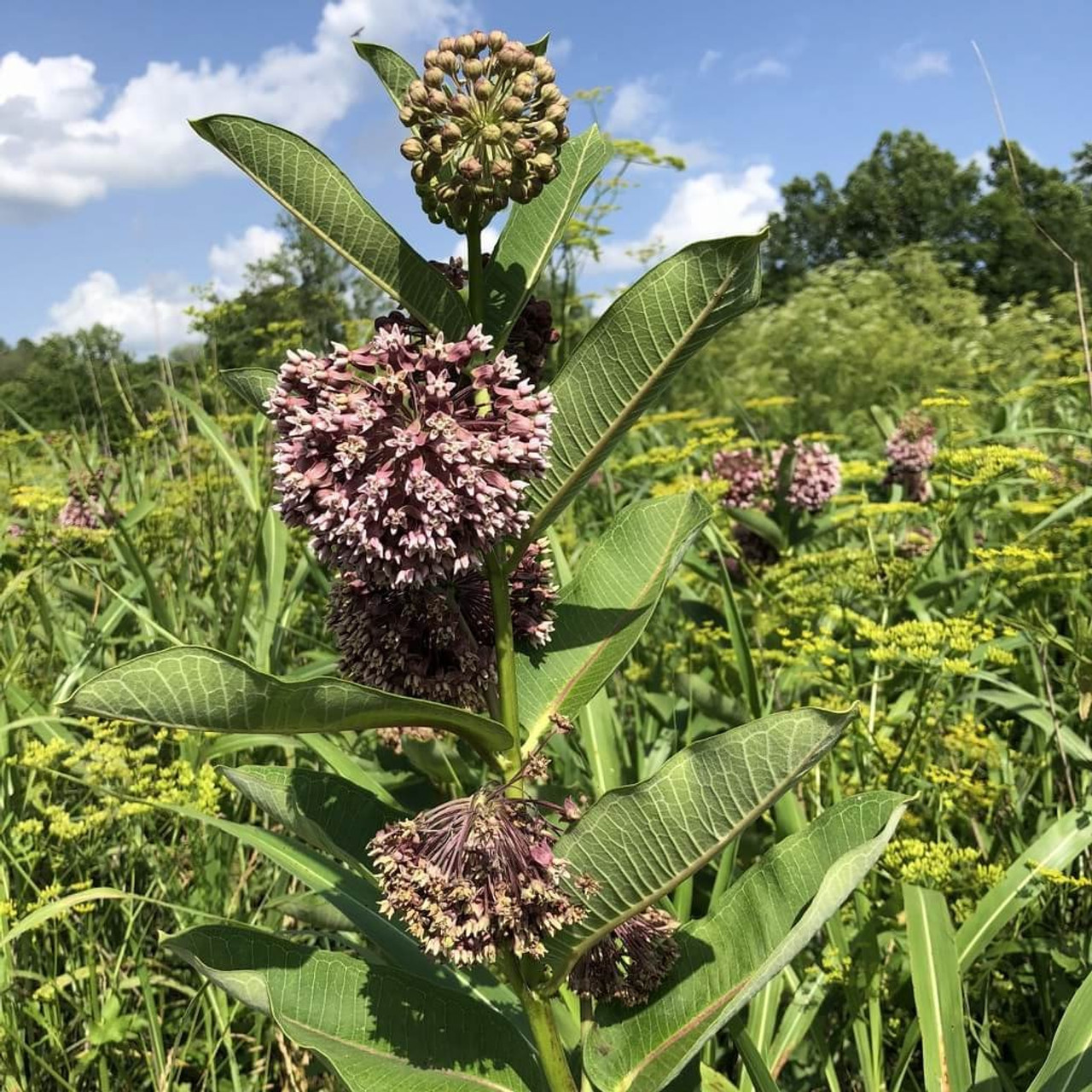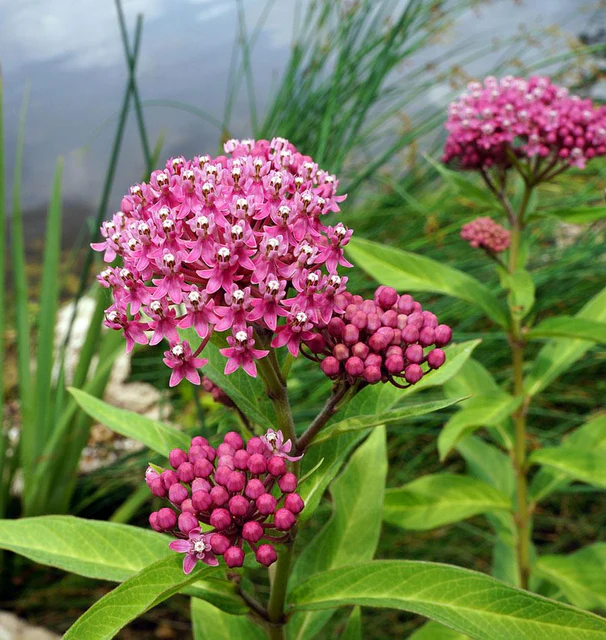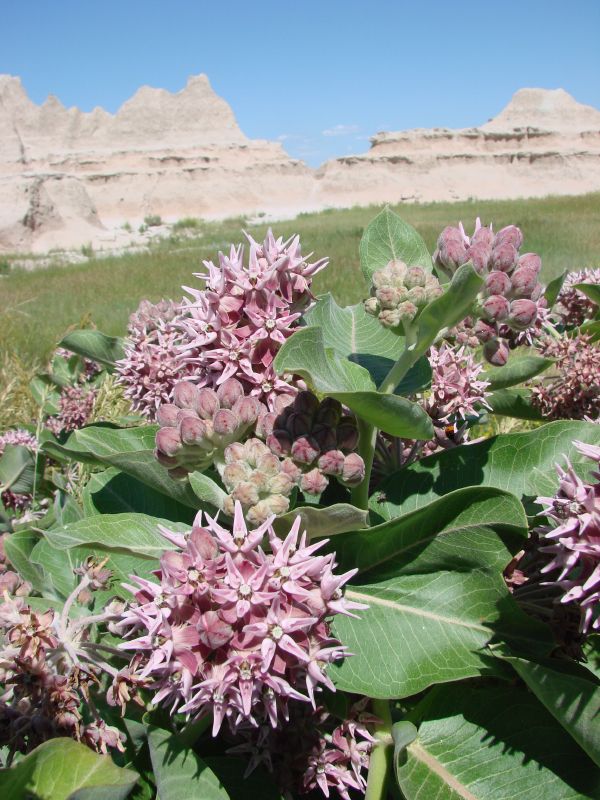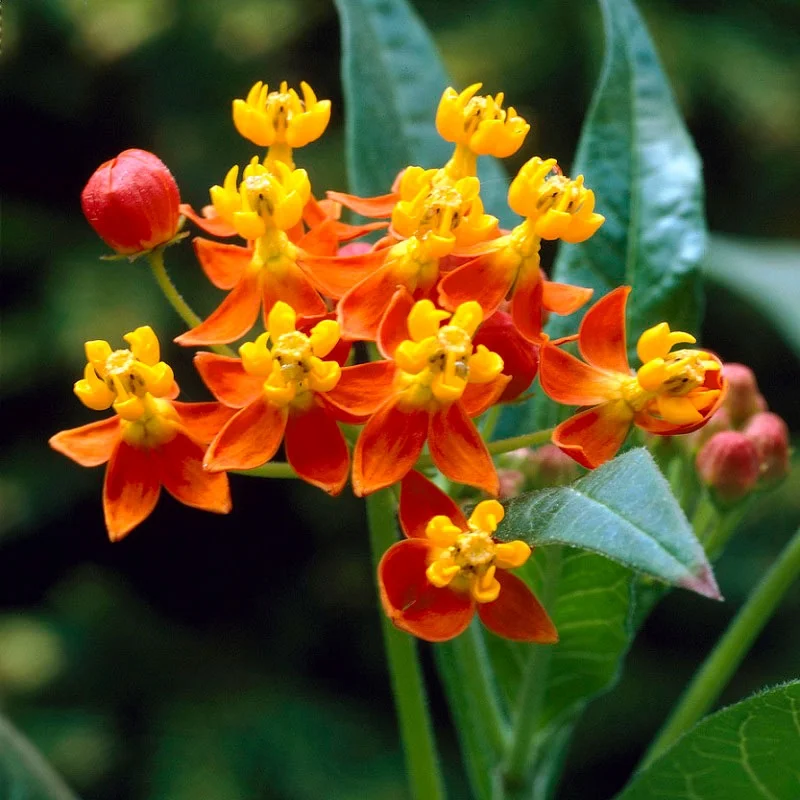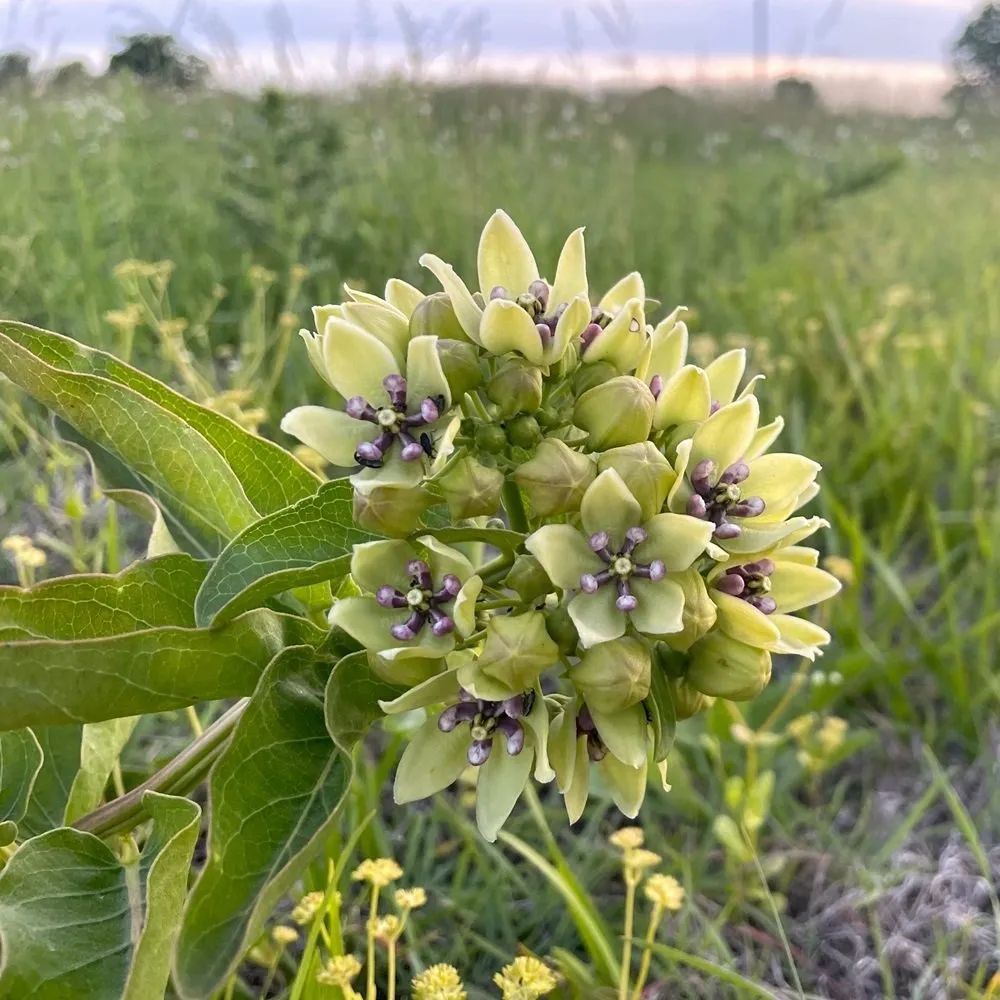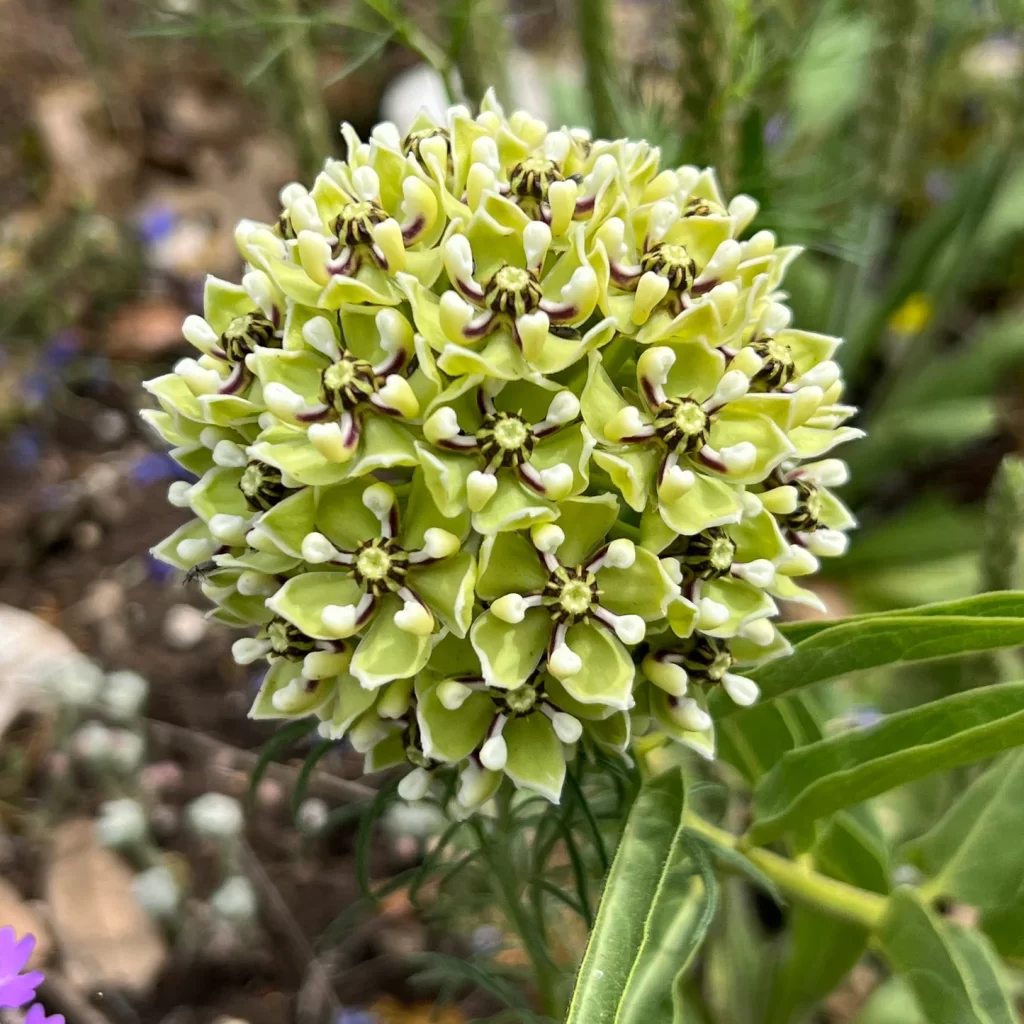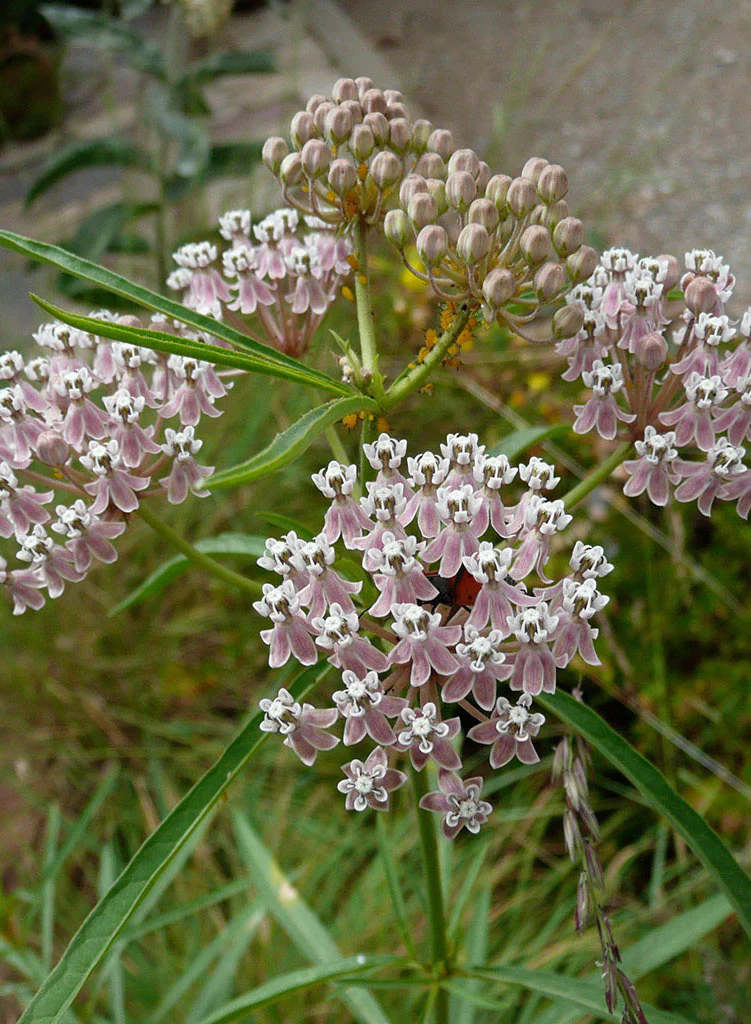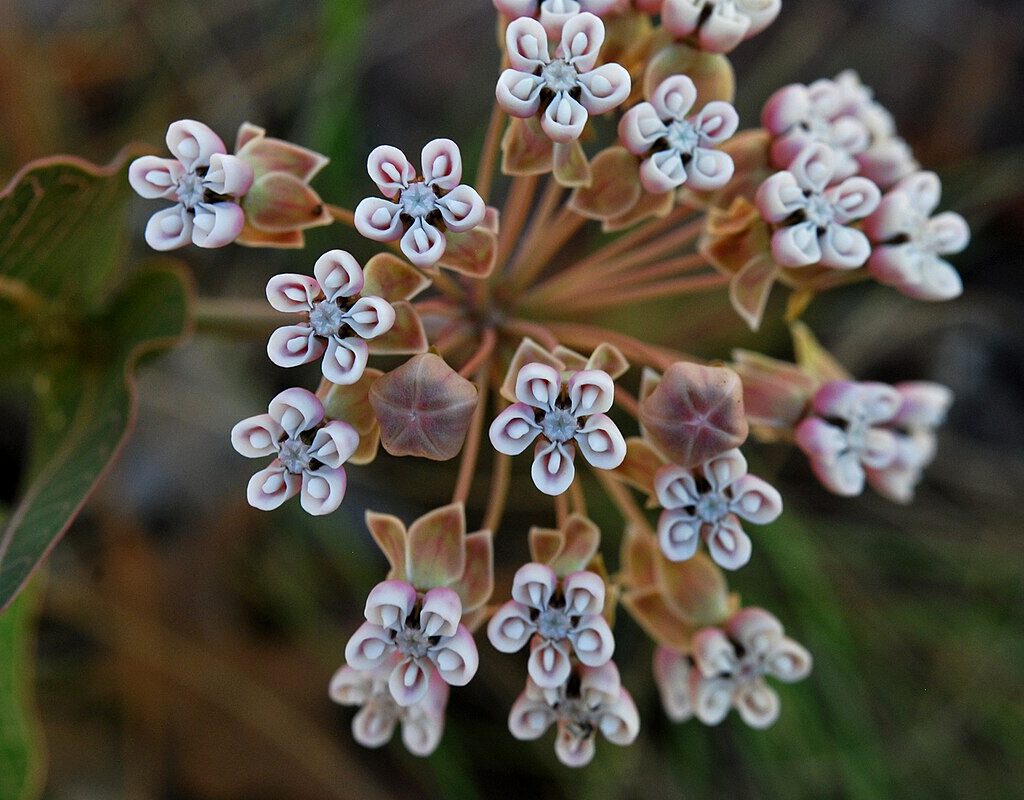Who wouldn’t love the idea of plucking a sun-ripened, juicy peach from their own garden? While peaches are often associated with sprawling orchards, the good news is — you don’t need acres of land to grow this luscious fruit. Even if you have a small garden, with a little creativity and care, you can successfully grow peach trees and enjoy their sweet rewards.
This guide will walk you through everything you need to know about growing peaches in a small garden, from choosing the right variety to harvesting your homegrown fruits.
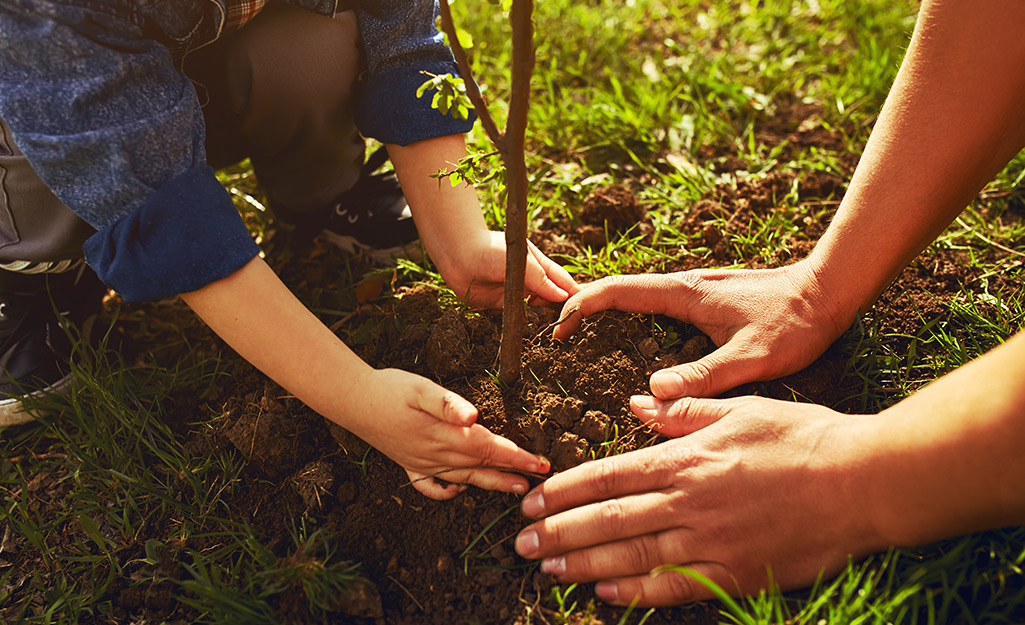
Why Grow Peaches in a Small Garden?
Growing your own peaches comes with several benefits:
- Freshness: Homegrown peaches taste far better than store-bought ones.
- Control: You can choose organic, pesticide-free growing methods.
- Aesthetic Appeal: Peach trees, with their delicate blossoms and lush foliage, enhance the beauty of any garden.
- Compact Varieties Available: Thanks to dwarf and semi-dwarf cultivars, even tiny spaces can accommodate a peach tree.
Choosing the Right Peach Variety
Selecting the right variety is crucial when space is limited. Look for dwarf or semi-dwarf cultivars that thrive in containers or small plots.
Best Compact Peach Varieties:
- Bonanza: A popular dwarf variety ideal for pots, reaches about 5-6 feet tall.
- Pix Zee: Compact tree with medium-sized, sweet fruits.
- El Dorado: Semi-dwarf tree with excellent flavor and disease resistance.
- Garden Gold: Another dwarf option with yellow-fleshed, freestone peaches.
Tip: Make sure the variety you choose is suitable for your local climate and USDA hardiness zone.
Ideal Growing Conditions for Peaches
To produce healthy, sweet fruits, peach trees require specific growing conditions.
1. Sunlight
Peach trees love the sun. Ensure they receive at least 6-8 hours of direct sunlight daily. Full sun exposure is essential for fruit development and disease prevention.
2. Soil
- Well-draining soil is a must to prevent root rot.
- A slightly acidic to neutral pH (around 6.0-7.0) is ideal.
- Enrich the soil with organic matter or compost to enhance fertility.
3. Climate
Peaches need a certain number of chilling hours (between 32°F and 45°F) during winter for proper flowering and fruiting. Check your local average chilling hours and select a variety accordingly.
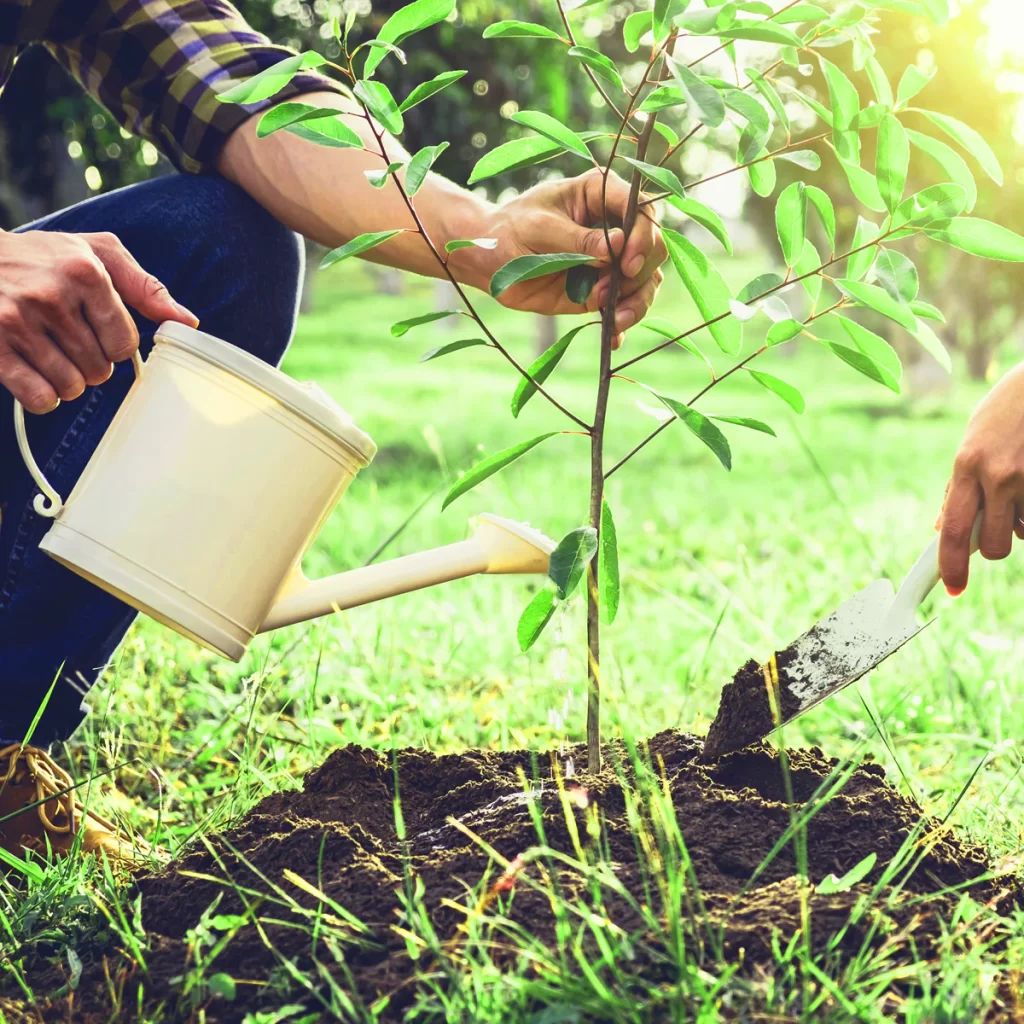
Planting Peaches in a Small Garden
Depending on your available space, you can plant peach trees directly in the ground, in containers, or as espaliered trees against a wall or fence.
1. In the Ground
- Dig a hole twice the width of the root ball and just as deep.
- Mix compost into the excavated soil.
- Place the tree in the hole, spread out the roots, and backfill.
- Water thoroughly and mulch around the base to retain moisture.
2. In Containers
- Choose a container at least 18-24 inches in diameter with drainage holes.
- Use a lightweight, well-draining potting mix.
- Place the tree at the same depth it was growing in its nursery pot.
- Keep the container in a sunny spot.
3. Espalier
This space-saving technique involves training the tree along a wall or trellis in a flat, two-dimensional shape.
- Select a young, flexible tree.
- Attach horizontal wires to a wall at intervals.
- Prune and tie branches to the wires to create a fan or horizontal pattern.
Caring for Your Peach Tree
Proper care ensures healthy growth and bountiful harvests.
1. Watering
- Keep the soil consistently moist but not soggy.
- During dry spells, water deeply once or twice a week.
- Avoid wetting the foliage to prevent fungal diseases.
2. Feeding
- Apply a balanced, slow-release fertilizer in early spring.
- Avoid high-nitrogen fertilizers, which encourage leafy growth over fruit production.
- Top-dress with compost annually.
3. Pruning
- Prune peach trees in late winter before new growth begins.
- Remove dead, damaged, or diseased branches.
- Thin out crowded areas to improve airflow and sunlight penetration.
- Maintain an open-center or vase shape for optimal fruiting.
Tip: Container-grown trees may require more frequent pruning to manage their size.
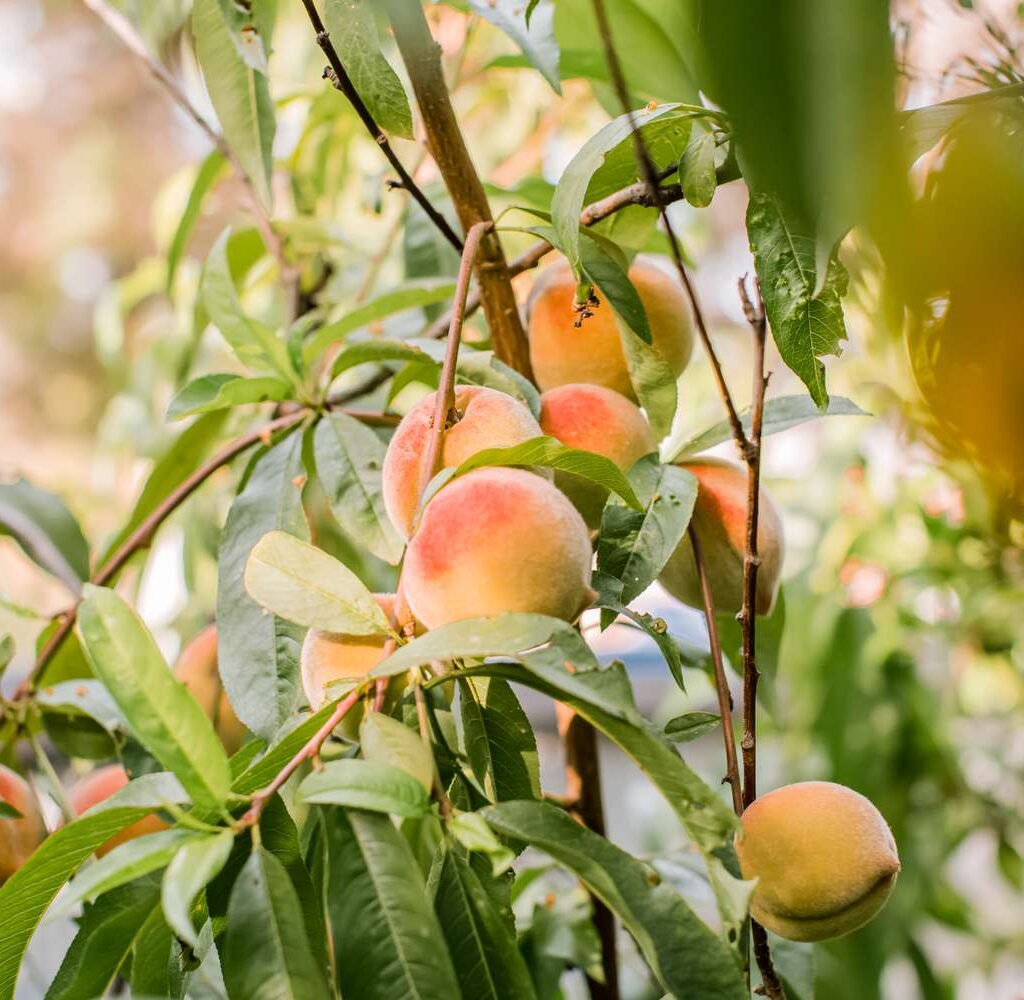
Dealing with Pests and Diseases
Peach trees can be susceptible to certain pests and diseases, but with early intervention and care, you can keep them healthy.
Common Issues:
- Peach Leaf Curl: Causes leaves to become distorted and discolored. Treat with a dormant-season fungicide.
- Aphids and Mites: Control with neem oil or insecticidal soap.
- Fruit Borers: Inspect regularly and remove affected fruits.
- Brown Rot: A fungal disease affecting fruit. Remove infected fruit and improve air circulation.
Pollination Needs
Most peach varieties are self-pollinating, which means a single tree can produce fruit. However, having another peach tree nearby can sometimes improve yield.
For container or espalier trees, hand pollination with a soft brush during the flowering period can also enhance fruit set.
Harvesting Your Peaches
Peach trees usually start bearing fruit within 2-4 years of planting, depending on the variety and growing conditions.
How to Know When Peaches Are Ready:
- Fruits develop a rich color and lose their green undertones.
- They yield slightly when gently pressed.
- They emit a sweet, fruity aroma.
Tip: Harvest carefully to avoid bruising, and handle them gently. Peaches are best eaten fresh but can also be canned, frozen, or made into jams.
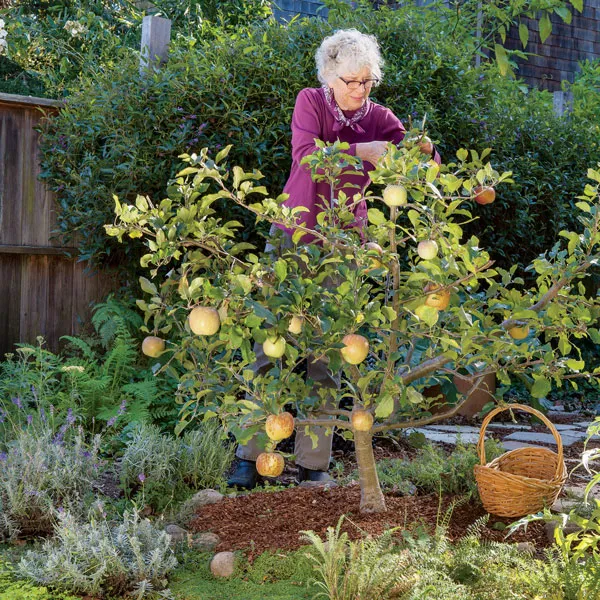
Overwintering Peach Trees in Small Gardens
If you live in a region with harsh winters, container-grown peach trees should be protected from extreme cold.
- Move containers to a sheltered spot like a garage or greenhouse.
- Mulch heavily around the base.
- Water sparingly during dormancy.
Ground-planted trees should be mulched and, if young, can be wrapped with burlap for insulation.
Final Thoughts
Growing peaches in a small garden is a rewarding and achievable endeavor. With the right variety, careful planting, and dedicated care, even the tiniest of gardens can offer the pleasure of sun-warmed, homegrown peaches. Whether you plant one in a pot on your patio or train it elegantly against a garden wall, a peach tree will not only bear delicious fruit but also add charm and vitality to your space.
So why wait? Pick your favorite variety and start growing your own little slice of orchard magic today!

